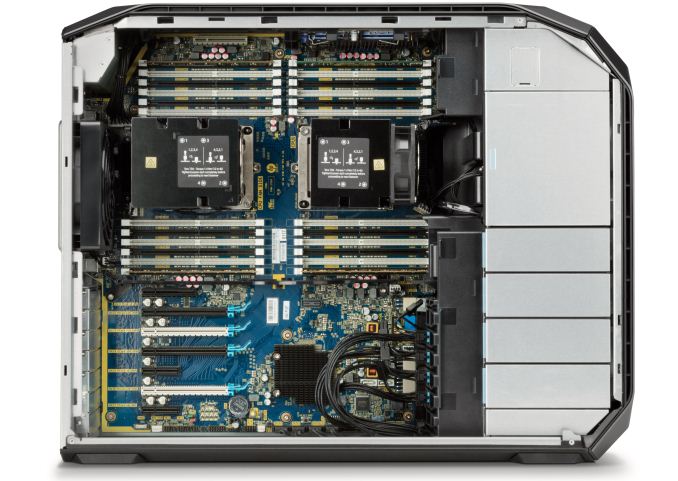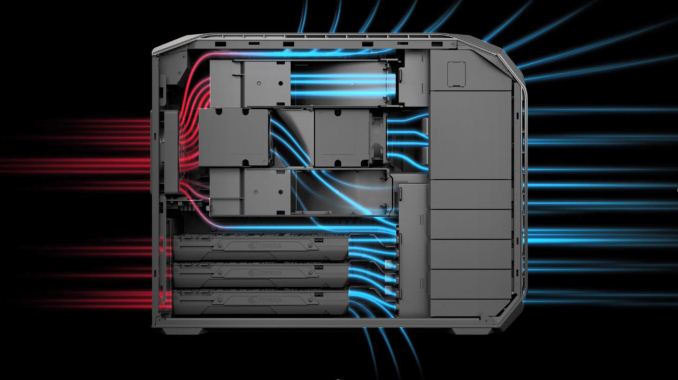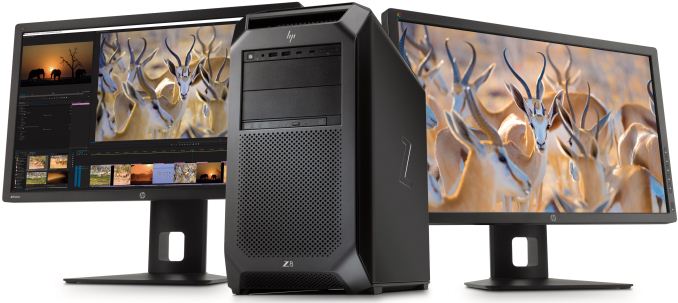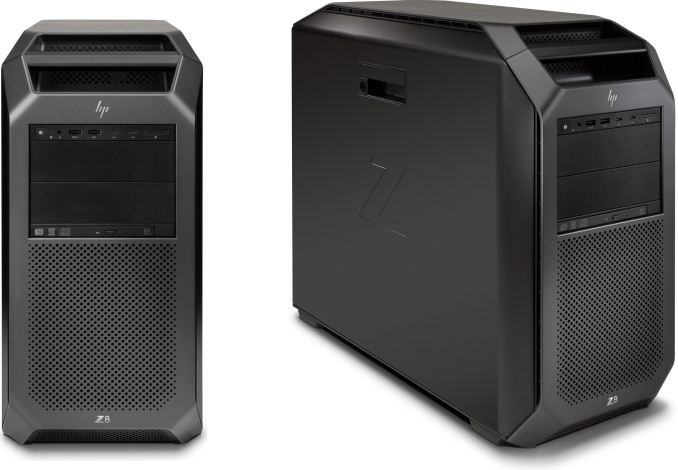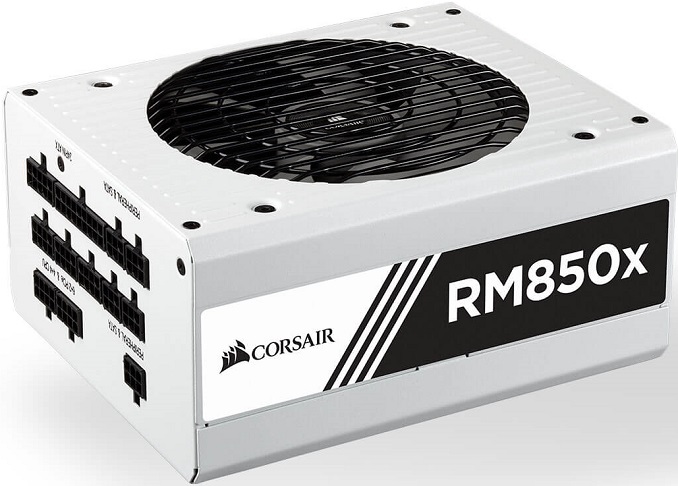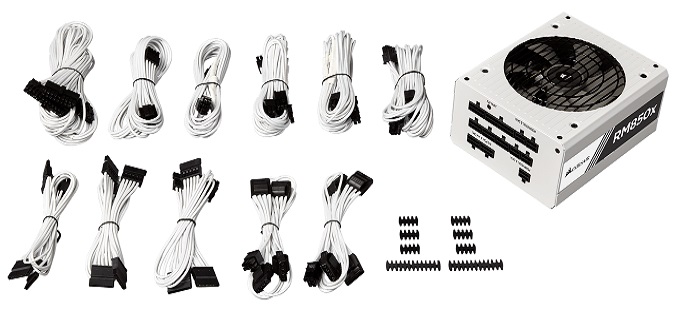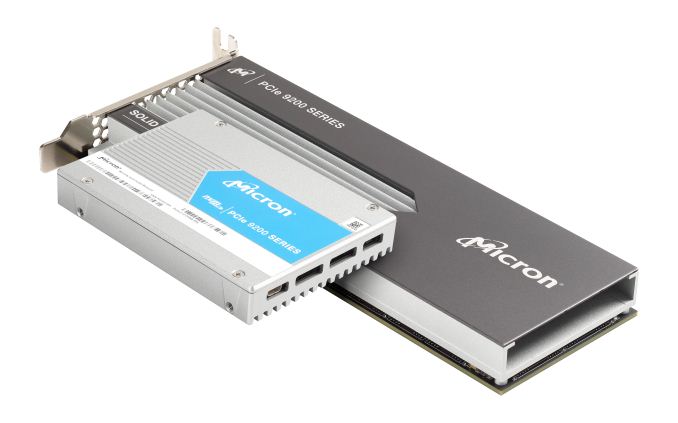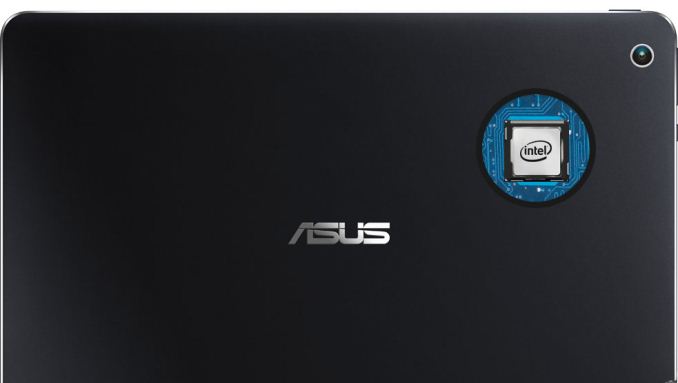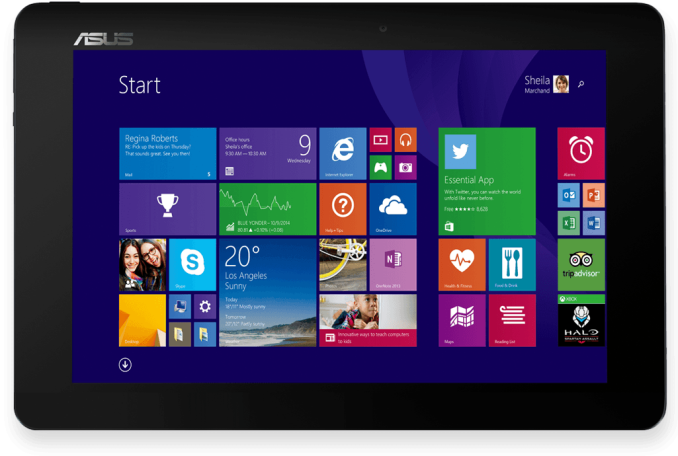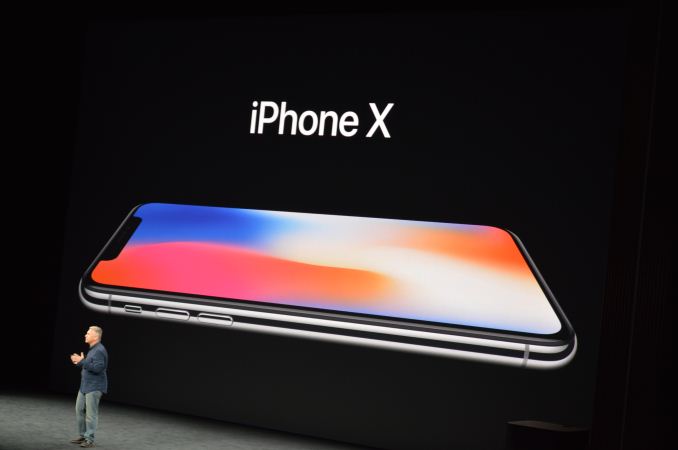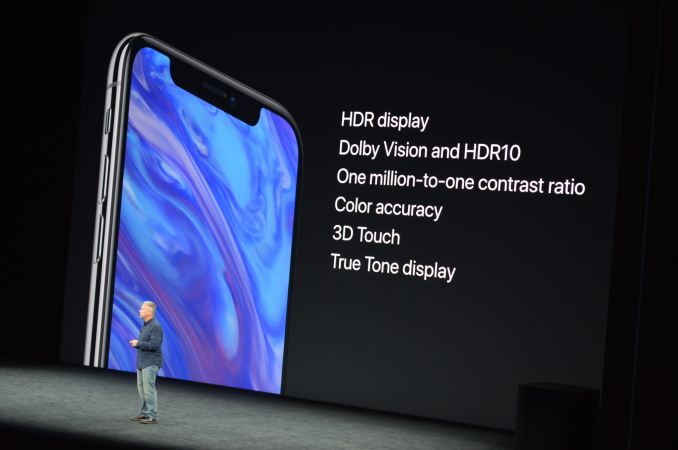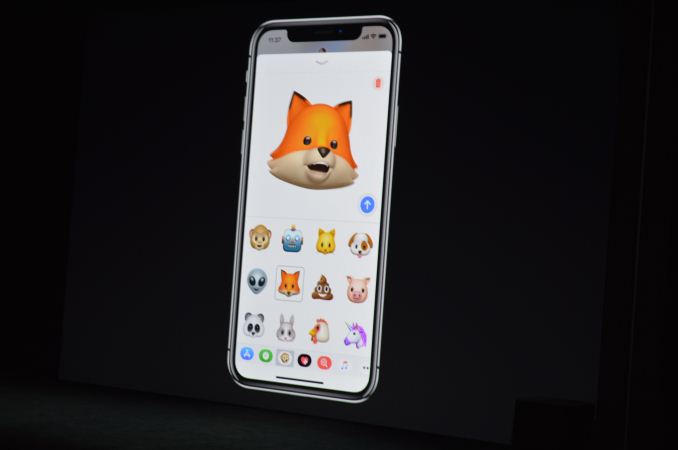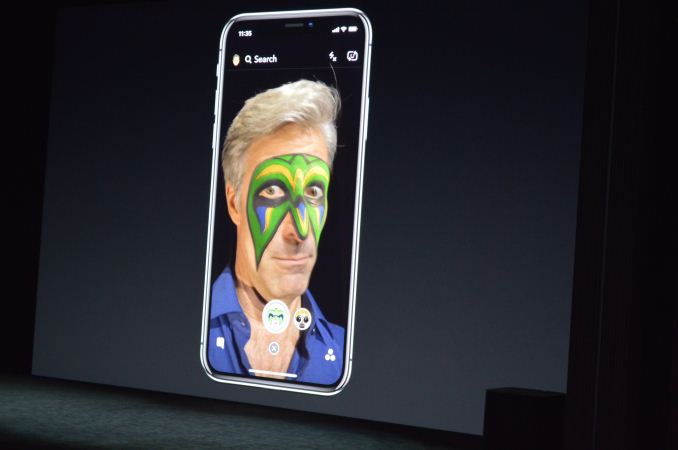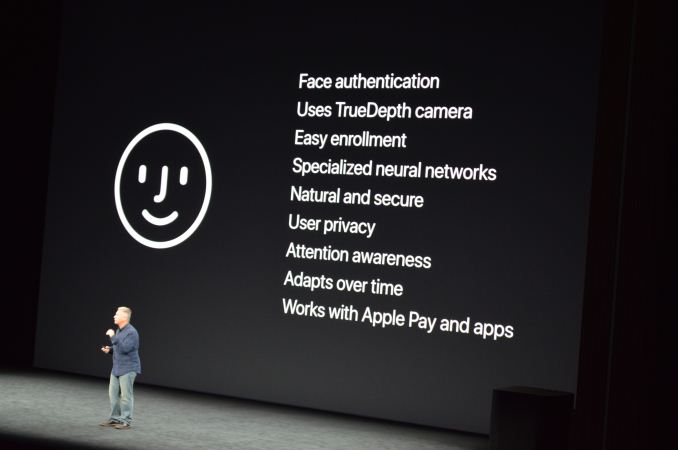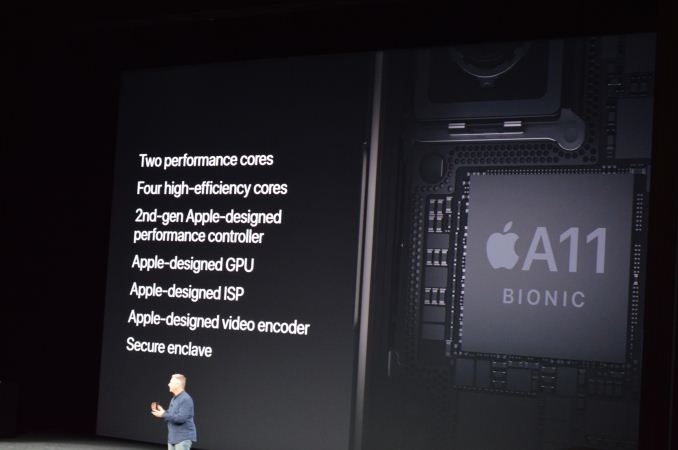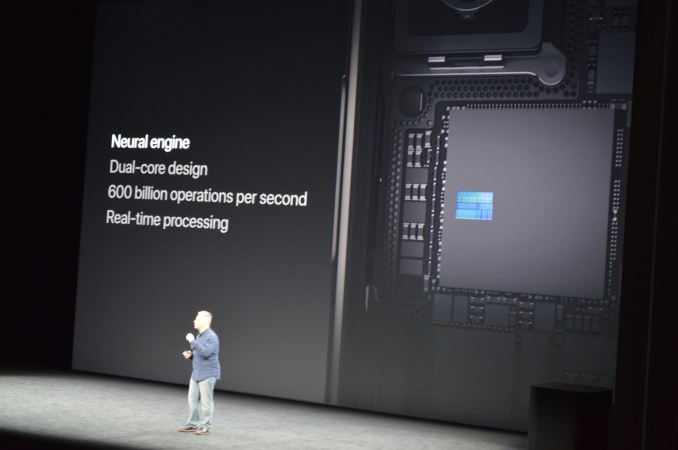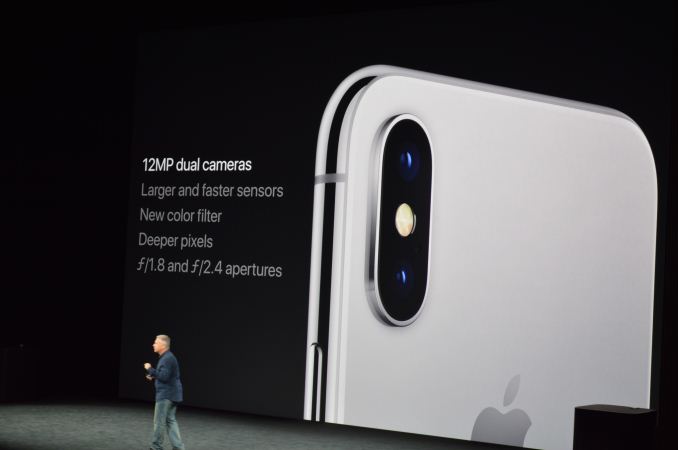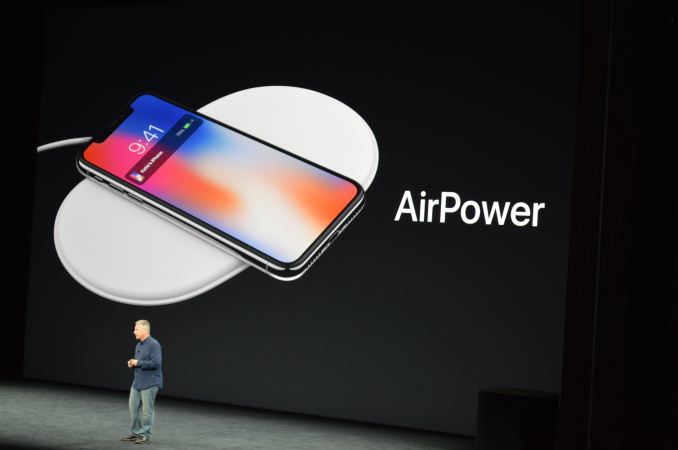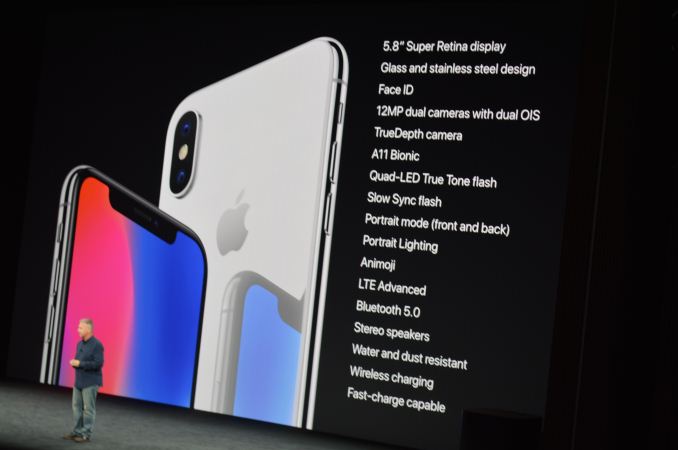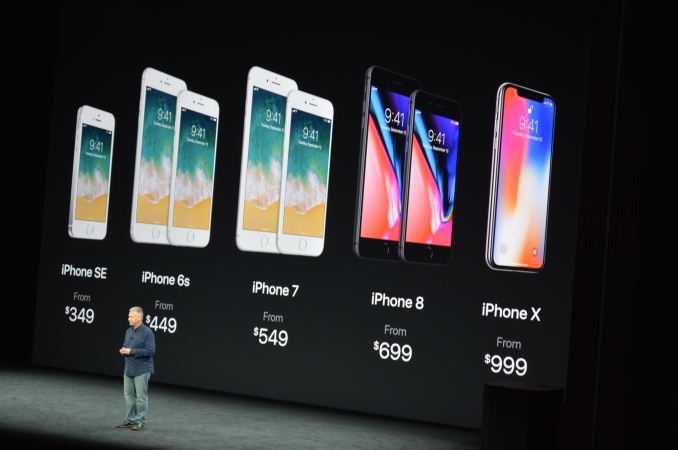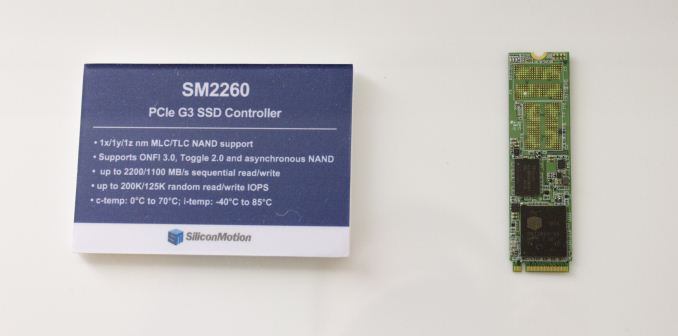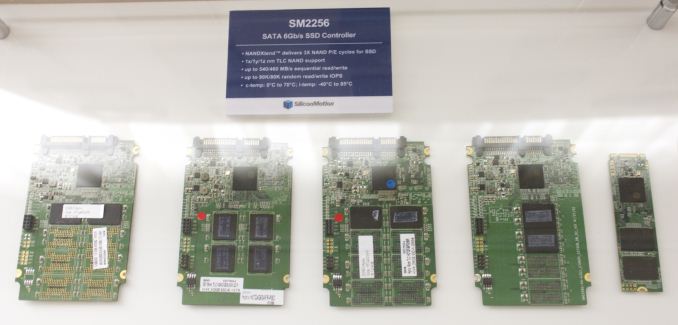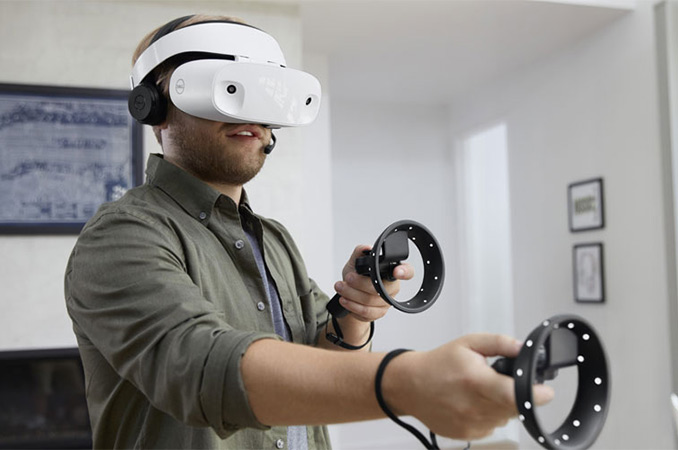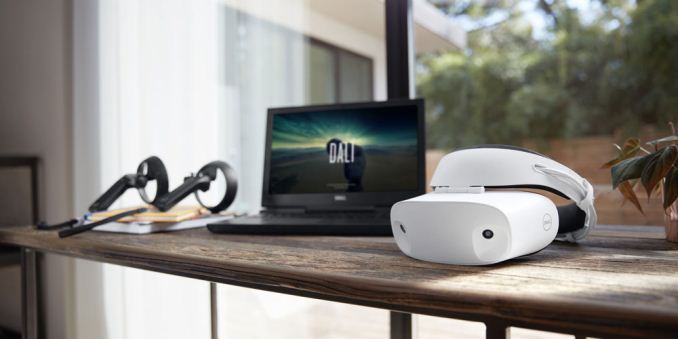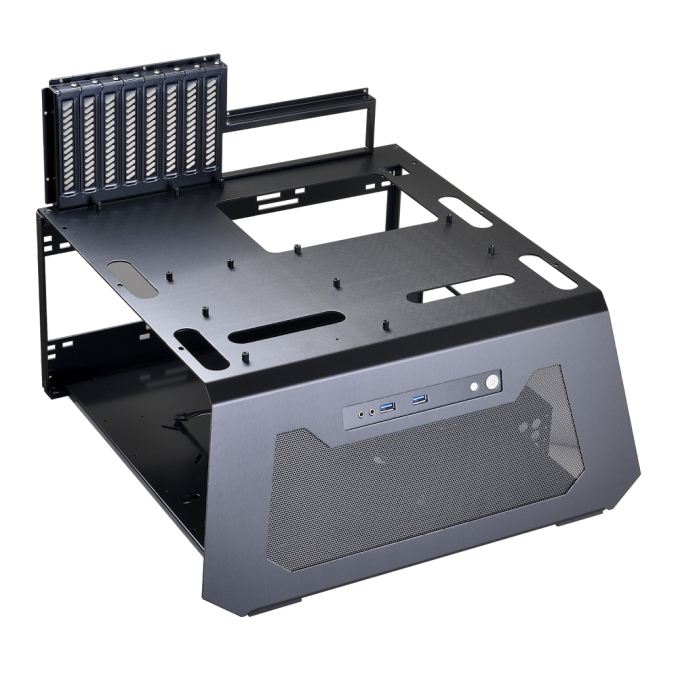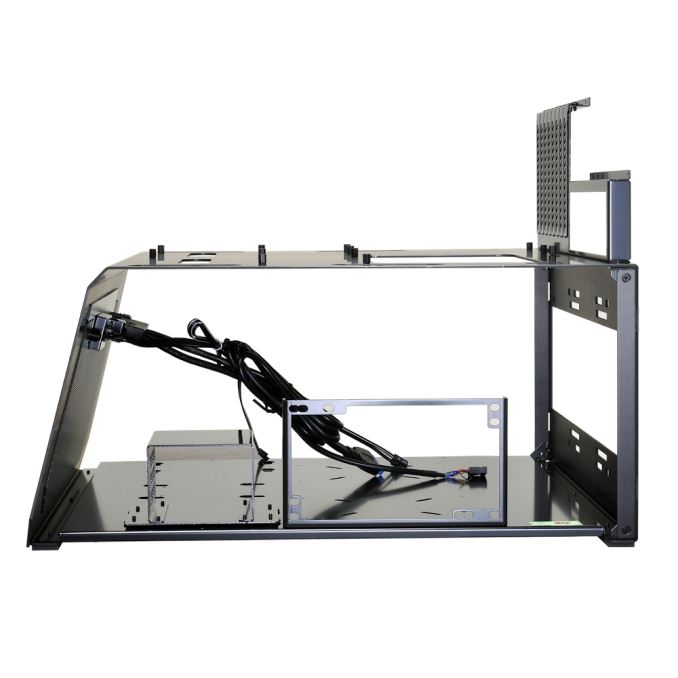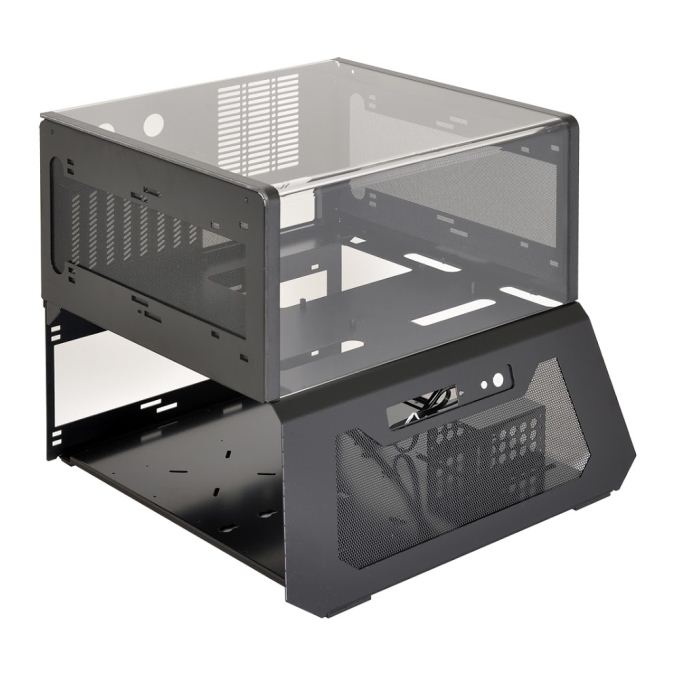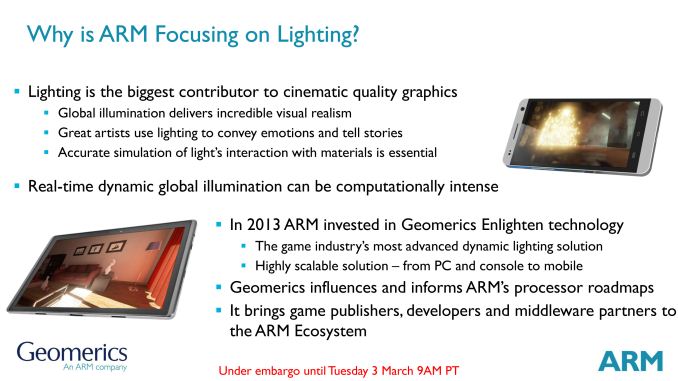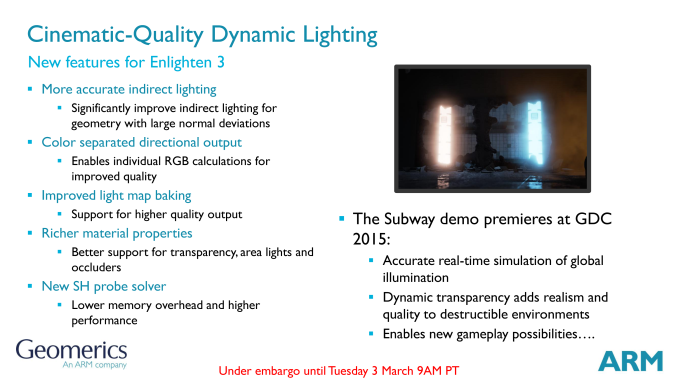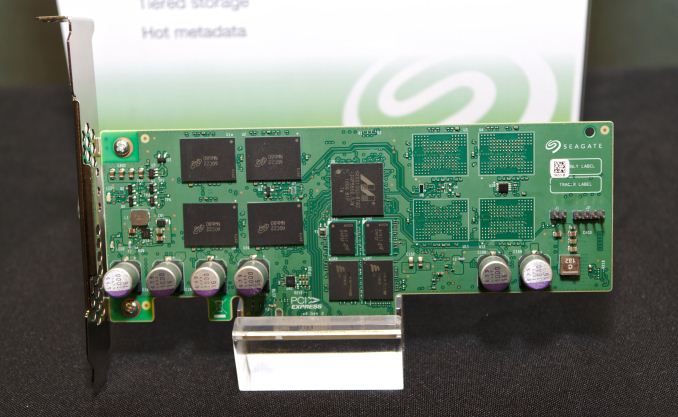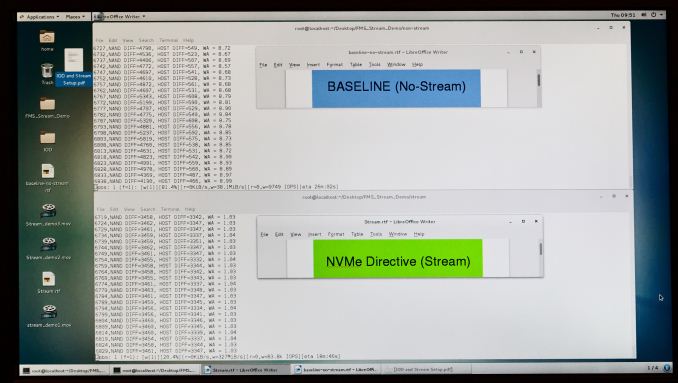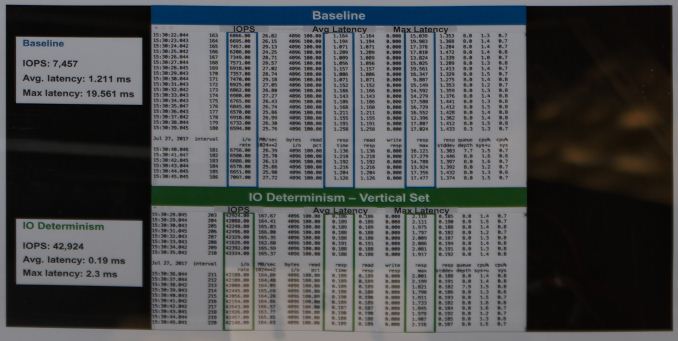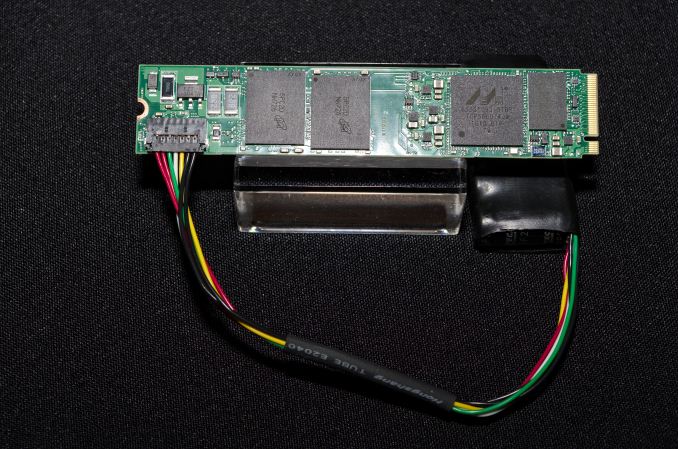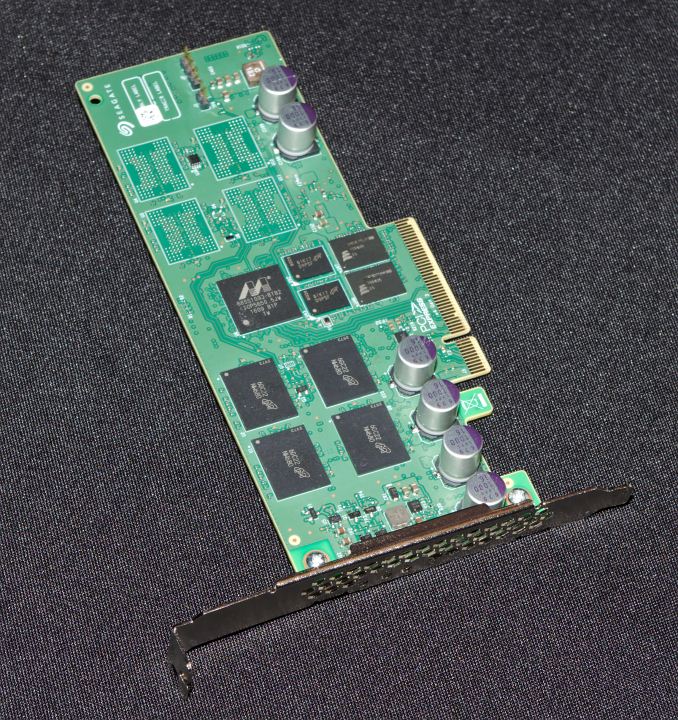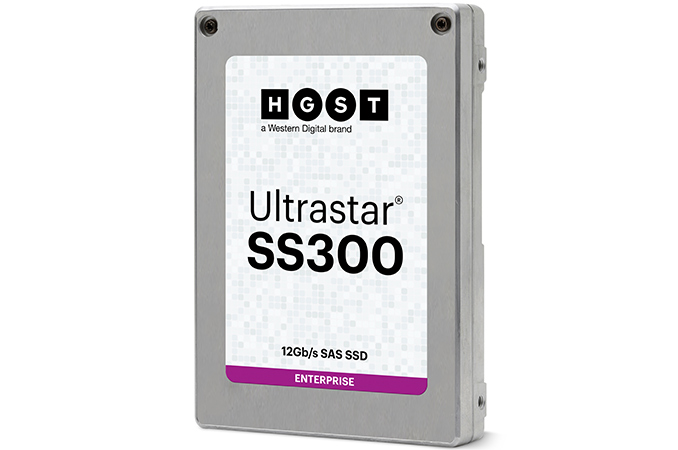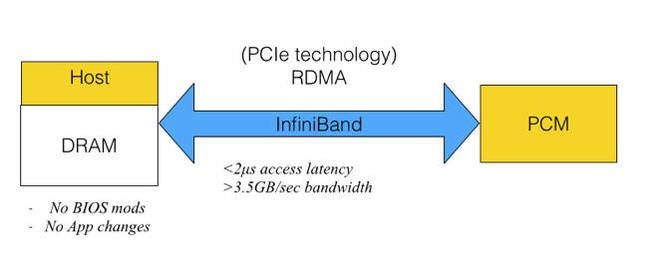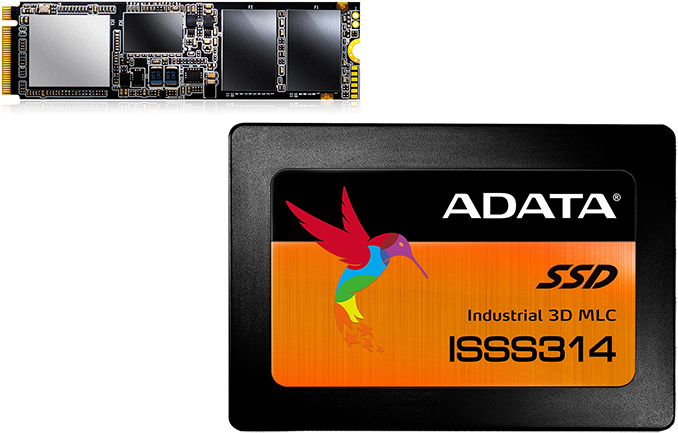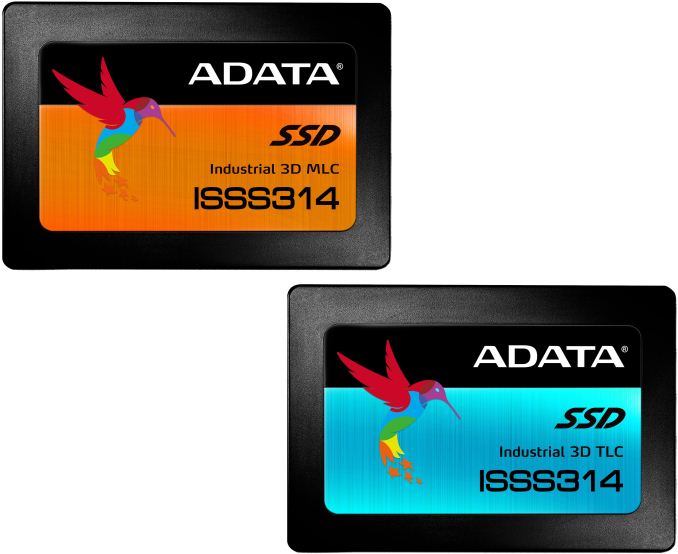Divers
-
HP Updates Z8 Workstations: Up to 56 Cores, 3 TB RAM, 9 PCIe Slots, 1700W
(AnandTech)
HP has updated its most powerful dual-processor Z8 workstation line with the latest components. The new systems contain up to two Intel Skylake-SP Xeon CPUs with up to 56 cores in total, up to 3 TB of DDR4 RAM, terabytes of storage as well as up to 9 PCIe slots along with optional TB3 and 10 GbE support via add-in cards. The HP Z8 workstation will be the pinnacle of HP’s computers for personal and professional use and its price in high-end configurations will surpass even the top-of-the-range gaming PCs.
Historically, most high-end workstations relied on server platforms to support more than one CPU and thus offer higher performance than any consumer desktop. The emergence of dual-core and then multi-core CPUs a little more a decade ago changed the workstation market quite quickly and significantly. In a world with quad-core CPUs, 4-way workstations did not make a lot of sense for 99% of the users and therefore they quickly became extinct. Moreover, by now, even 2-way workstations became rare. Today, the vast majority of workstations use one multi-core CPU that provides enough compute horsepower for professional workloads, whereas GPU-based accelerators are used for tasks like simulations. Nonetheless, there are still users who need maximum x86 performance and who therefore require 2-way workstations — and the HP Z8 is aimed precisely at such users. While the Intel Xeon Scalable processors with extreme core count were developed primarily with servers in mind, the Z8 is a system that people put on their desks and therefore it has a number of specific requirements regarding noise levels, features, security, compatibility with components and so on.
One of the key components of all PCs is its microprocessor. When it comes to the HP Z8, it is based on up to two Intel Xeon Platinum 8180 with 28 cores and 205 W TDP each, which means that the system has to remove 410 W of thermal energy only from CPUs, and this requirement had a significant impact on the design of the whole system. The company did not want to use a liquid cooling system, so it had to design an air cooling solution capable of cooling down two extremely hot CPUs as well as up to 24 DDR4-2666 memory modules. Each processor has its own radiator equipped with a high-pressure air fan (which speed is regulated by BIOS in accordance with system temperature monitored by numerous sensors). In addition, the system has multiple airflow vents on the front and on the top as well as one fan that exhausts hot air on the back. According to HP, such a chassis architecture ensures that the second CPU does not re-use warm air from the first one, but since they are located in close proximity, one will always affect another with its heat. Finally, the system has additional fans that cool down other components and produce more airflow within the chassis.
Speaking of other components, the HP Z8 supports plenty of them — whatever one might want. First off, the system has four PCIe 3.0 x16 slots for graphics cards or SSDs (up to AMD Radeon Pro, NVIDIA Quadro P100 or GP100, up to 4 TB HP Z Turbo Drive Quad Pro, etc.) three PCIe 3.0 x8 (two are non-hot swap) slots for SSDs and two PCIe 3.0 x4 slots. In addition to PCIe-based storage, the Z8 also features four 2.5”/3.5” bays for SATA/SAS SSDs or HDDs as well as two external 5.25” bays that can also accommodate drive form-factor storage devices using appropriate adapters. Those who need it, HP may also install an SD card reader as well as a slim DVD or Blu-ray ODD.
When it comes to connectivity, the HP Z8 has all the bases covered. By default, the system supports two GbE connectors (powered by Intel controllers), an 802.11ac Wi-Fi + Bluetooth module (Intel Wireless-AC 8265 controller), two USB 3.1 Type-C ports and two USB 3.1 Type-A ports on the front, four USB 3.1 Type-A ports on the back, multi-channel audio connectors (a Realtek HD ALC221 controller) on the back, a TRRS audio connector on the front and so on. Meanwhile, owners can optionally order to install two 10 GbE controllers, a Thunderbolt 3-supporting add-in-card and a variety of custom components for various industries and workloads (an external audio solution for a 5.25” bay, for example).
Since many businesses and enterprises require robust security for all of their machines, the HP takes everything seriously and ships the Z8 with a whole set of security features that it calls HP SureStart. The system features secure authentication, full volume encryption, TPM 2.0, has a Kensington lock and so on.
All the CPUs, GPUs, SSDs and other components require a lot of power and HP Z8 has plenty of it. The manufacturer offers 1125 W, 1450 W or 1700 W internal PSUs with up to 90 % efficiency. The PSU is located in a compartment behind the motherboard, so chances are that HP uses proprietary units.
General Specifications of the HP Z8 2017 HP Z8 G4 CPU Family Intel Xeon Scalable processor Models Xeon Platinum 8180 (2.5GHz/3.8GHz, 38.5MB cache, 28 cores)
Xeon Platinum 8160 (2.1 GHz/3.7 GHz, 33 MB cache, 24 cores)
Xeon Gold 6152 (2.1 GHz/3.7 GHz, 30.25 MB cache, 22 cores)
Xeon Gold 6154 (3 GHz/3.7 GHz, 24.75 MB cache, 18 cores)
Xeon Gold 6148 (2.4 GHz/3.7 GHz, 27.5 MB cache, 20 cores)
Xeon Gold 6142 (2.6 GHz/3.7 GHz, 22 MB cache, 16 cores)
Xeon Gold 6136 (3 GHz/3.7 GHz, 24.75 MB cache, 12 cores)
Xeon Gold 6140 (2.3 GHz/3.7 GHz, 24.75 MB cache, 18 cores)
Xeon Gold 6134 (3.2 GHz/3.7 GHz, 24.75 MB cache, 8 cores)
Xeon Gold 6132 (2.6 GHz/3.7 GHz, 19.25 MB cache, 14 cores)
Xeon Gold 6130 (2.1 GHz/3.7 GHz, 22 MB cache, 16 cores)
Xeon Gold 6128 (3.4 GHz/3.7 GHz, 19.25 MB cache, 6 cores)
Xeon Gold 5120 (2.2 GHz/3.2 GHz, 19.25 MB cache, 14 cores)
Xeon Gold 5118 (2.3 GHz/3.2 GHz, 16.5 MB cache, 12 cores)
Xeon Gold 5122 (3.6 GHz/3.7 GHz, 16.5 MB cache, 4 cores)
Xeon Silver 4116 (2.1 GHz/3 GHz, 16.5 MB cache, 12 cores)
Xeon Silver 4114 (2.2 GHz/3 GHz, 13.75 MB cache, 10 cores)
Xeon Silver 4112 (2.6 GHz/3 GHz, 8.25 MB cache, 4 cores)
Xeon Silver 4108 (1.8 GHz/3 GHz, 11 MB cache, 8 cores)
Xeon Bronze 3106 (1.7 GHz, 11 MB cache, 8 cores)
Xeon Bronze 3104 (1.7 GHz, 8.25 MB cache, 6 cores)Graphics Entry NVIDIA Quadro P400 (2 GB GDDR5)
NVIDIA Quadro P600 (2 GB GDDR5)
AMD FirePro W2100 (2 GB DDR3)Mid-Range NVIDIA Quadro P1000 (4 GB GDDR5)
NVIDIA Quadro P2000 (5 GB GDDR5)
AMD Radeon Pro WX 3100 (4 GB GDDR5)
AMD Radeon Pro WX 4100 (4 GB GDDR5)High-End NVIDIA Quadro P4000 (8 GB GDDR5)
AMD Radeon Pro WX 7100 Graphics (8 GB GDDR5)Ultra High-End NVIDIA Quadro P5000 (16 GB GDDR5X)
NVIDIA Quadro P6000 (24 GB GDDR5X)
AMD Radeon Pro WX 9100 Graphics (16 GB HBM2)
NVIDIA Quadro GP100 (16 GB HBM2)RAM 24 DDR4 DIMMs, up to 1.5 TB of DDR4-2666
(3TB options in H1 2018, when M CPUs are available)Storage Bays 4 × 2.5"/3.5", 2 × 5.25", 1 × slim 5.25" for ODDs Options 300 GB SAS (15000 rpm)
500 GB up to 2 TB SATA (7200 rpm)
500 GB SATA SED (7200 rpm)
1 TB up to 4 TB 7200 rpm SATA Enterprise
256 GB up to 2 TB SATA SSD
256 GB up to 512 GB SATA SED Opal 2 SSD
240 GB up to 480 GB SATA Enterprise SSD
256 GB up to 1 TB HP Z Turbo Drive PCIe SSD M.2
256 GB up to 512 GB HP Z Turbo Drive PCIe SED SSD M.2
256 GB up to 4 TB HP Z Turbo Drive Quad Pro PCIe SSD
HP Slim DVD-ROM
HP Slim Blu-ray Writer
HP Slim DVD-WriterNetworking GbE Integrated Intel I219-LM PCIe GbE
Integrated Intel X722 PCIe GbE
Intel I350-T2 dual-port GbE NIC
Intel I350-T4 dual-port GbE NIC
Intel I210-T1 PCIe GbE10 GbE Intel X550-T2 dual-port GbE NIC
Intel X710-DA2 dual-port GbE NIC
Intel 10 GbE SFP+ SR transceiver
HP dual-port 10GBase-T NICWireless Intel Dual Band Wireless-AC 8265 802.11a/b/g/n/ac (2x2) Wi-Fi and Bluetooth 4.2 Combo, non-vPro PCIe 3.0
Expansion Slotsx4 2 x8 3 x16 4 Notes 1 PCIe x8 has rear bulkhead access and 2 PCIe x8 are internal access only. Slot 1: Transforms to PCIe x8 when 2nd CPU is installed.
Slots 3 and 6: are available only when 2nd processor is installed.
PCIe x16 - Available only when 2nd processor is installedUSB 3.1 2 × Type-A, 2 × Type-C 3.0 4 × Type-A 2.0 unknown Thunderbolt Optional Thunderbolt 3 add-in-card Card Reader 4-in-1 card reader PSUs 1125 W, 1450 W, 1700 W Other I/O Audio connectors, Realtek HD ALC221 controller Input Devices HP Wireless Business Slim Keyboard and Mouse Combo
HP USB Business Slim Keyboard
USB Premium wired keyboard
USB Smart Card (CCID) keyboard
3Dconnexion CADMouse
HP USB Optical Mouse
HP PS/2 Mouse
HP USB Hardened MouseDimensions 8.5 × 21.7 × 17.5 in
21.59 × 55.12 × 44.45 cmWeight Starting at 49.4 lb
Starting at 22.4 kgOperating System Windows 10 Pro for Workstations
HP Installer Kit for Linux
HP Red Hat Enterprise LinuxPrice Starting at $2,439 Now, time to talk about availability and pricing. HP intends to ship the HP Z8 workstations in October. An entry-level model with one CPU, a basic GPU and storage will cost $2,439. Meanwhile, once the system is equipped with two Xeon Platinum 8180 CPUs, NVIDIA Quadro P100/GP100 graphics, multiple PCIe SSDs, 3 TB of DDR4 memory, several 12 TB HDDs and various advanced I/O capabilities (TB3, 10 GbE, etc.), its price will easily hit tens of thousands of dollars.
It's normally at this point that a vendor such as HP states that the high-end models are likely to be sold under B2B contracts, where per-unit costs are not as severe. One OEM has told us that only 5% of sales of their high-end workstations come through direct sales for onlike pricing.
Gallery: HP Updates Its Dual-Processor Z8 Workstation: Up to 56 Cores, 3 TB RAM, 9 PCIe Slots, 1700WRelated Reading
- HP Announces Omen X Laptop: 17.3” LCD, Core i7 + GeForce GTX with Overclocking
- HP Expands Commercial VR Strategy: Z VR Backpack and Immersion Centers
- HP Launches Elite x2 1012 G2 2-in-1: 12.3-Inch Display, Kaby Lake, 1 TB SSD, 16 GB LPDDR3, TB3
- HP Z2 Mini G3 Announced: Miniature Professional Workstation with Xeon and Quadro
- HP Introduces HP ENVY 13 Laptops with Kaby Lake, USB-C, New Battery, $849
- HP Updates The Z240 Workstation With The Core i7-6700K
-
Corsair Announces White Color Option for RM750x and RM850x Power Supplies
(AnandTech)
Corsair has announced a new color option for the RMx series power supplies, Arctic White. Readers with a watchful eye may remember that a while ago the company brought out a special edition of the RM1000i PSU in white. Now by popular demand, Corsair has made this a standard option for two of their PSUs, the RM750x and RM850x.
The newly redecorated power supplies are otherwise identical to their existing black-painted counterparts. This means they have fully modular cabling which can minimize the amount of wires users need to use, and see, in their cases allowing for a cleaner look. The cables come already individually sleeved in white with black connectors using three layers of paracord for each. Also something of note, one will find in-line capacitors on the ATX, EPS12V, and PCIe cables which Corsair says helps reduce ripple and noise, and improve voltage regulation.
Features of the RMx series include a Zero RPM Fan Mode, where the rifle bearing 135mm fan sit idle during light to medium loads, only spinning up with heavy loads or at a specific temperature. On top of that The RMx line carries an 80 Plus Gold certification for efficiency, uses 100% all Japanese capacitors rated to 105C, and provides owners with a long 10 year warranty.
Corsair RM750x and RM850x Specifications RM750x RM850x Rated Combined Rated Combined +3.3V 25A 150W 25A 150W +5V +12V 62.5A 750W 70.8A 850W -12V 0.8A 9.6W 0.8A 9.6W +5Vsb 3A 15W 3A 15W Total Power 750W 850W Connector Type RM750x RM850x ATX 24 Pin 1 EPS 4+4 Pin 1 2 PCIe 6+2 Pin 4 6 SATA 8 10 4P Molex 7 8 Floppy 1 Gallery: Corsair RMx whiteThe Artic White versions will fetch a $10 premium over the traditional charcoal/black RMx models. They are priced at $149.99 for the RM750x and $169.99 for the RM850x at the Corsair Website. Finally, Corsair is also stating that at least for now, this is it for white RMx PSUs; there are no plans to produce the lower wattage RMx series power supplies in white.
Related Reading:
-
Google Chrome vous avertit en cas de fuite de votre mot de passe
(Génération NT: logiciels)
La mouture 79 de Google Chrome est disponible avec un accent essentiellement mis sur le renforcement de la sécurité.
-
MSI Teases All Black X99S SLI PLUS
(AnandTech)
With every generation, motherboard manufacturers are increasingly using social media to provide teasers about their upcoming products. MSI had already shown one of its X99 motherboards, or at least a pre-production sample, at Computex but now another has surfaced via Facebook. The X99S SLI PLUS seems to come in an all-black delivery, although judging by the dull-ness of the rear panel one might suggest that MSI reduced the color palette to a grey scale but some red color in the USB 3.0 is still there.
Aside from the LGA2011-3 socket cover which is different to LGA2011-0, this X99 motherboard will support eight DIMMs with the power delivery isolated to above the CPU only. It looks like a single 8-pin ATX power connector, and we can tell that this motherboard is not part of MSI’s OC range as there are no overclocking buttons in the top right of the motherboard.
There are two USB 3.0 headers on the right, followed by eight SATA 6 Gbps ports. Storage also comes via a SATA Express (which has two more SATA ports) and an M.2, although as of yet we do not know whether X99 will support more than one PCIe storage device for Intel’s RST at a time, so there may still be some context of storage bandwidth switching similar to Z97. I see at least five fan headers on this motherboard, along with two USB 2.0 headers at the bottom as well as MSI’s usual power/reset/OC Genie buttons. Worth noting is the lack of a two-digit debug display.
The X99S SLI PLUS sounds like it will be aimed at a gaming crowd, however the audio portion of the motherboard looks significantly regular, more akin to a stock ALC1150 or ALC898 audio codec implementation. MSI also lists the number of PCB layers it uses on the bottom right of its boards, and this looks like an 8-layer implementation.
Teasers are great, although we cannot tell more about the storage controllers used until we get more information about the X99 chipset – whether it supports M.2/SATAe, how many SATA ports, how many USB 3.0 ports and so on. The MSI X99S SLI PLUS seems to come across as a mid-range X99 motherboard overall, especially when we consider what has been on X79 motherboards in the past.
Source: Facebook, MSI Malaysia Fanclub
-
Apple Discontinues iPod Nano and iPod Shuffle
(AnandTech)
Apple has discontinued its iPod Nano and iPod Shuffle personal media players. The only iPod that remains in Apple’s fleet is the iPod Touch, which is based on the iOS device hardware and software stacks. At present, Apple’s iPod Nano and iPod Shuffle are still available from retailers like BestBuy, but EOL of the outdated iPods once again signals that MP3 players are essentially a dead product category.
Apple launched its first iPod in late 2001 and the player quickly gained popularity among users of Apple’s Mac computers. Initially, Steve Jobs did not want iPod to be compatible with Windows-based PCs as he considered the player to be an important selling point for the Mac platform as back then MP3 players from other makers were not sophisticated or user friendly. Moreover, in the lack of smartphones in Apple’s arsenal, iPod and iTunes (launched in early 2003) were in the center of its personal digital media strategy of the company.
Other executives at Apple persuaded the CEO to make iPod and iTunes compatible with Windows in 2004 and this is when sales of the music player started to grow rapidly. Several years later, the iPod became Apple’s most successful product ever and brought the company billions of dollars. Over time, many third-party accessories were developed for iPods, creating an industry around one product. Besides, Apple’s iPod players were among of the most desired Christmas gifts in the U.S. in the second half of 2000s.
Throughout its more than 15-year history, Apple’s iPod has changed its form-factor multiple times and switched hardware platforms for a dozen of times. For example, Apple’s initial iPods used miniature HDDs (including HGST’s and Seagate’s 1” hard drives in the iPod Mini), but eventually all of them switched to NAND flash memory. With iPod Touch, the players obtained hardware found in iPhones and started to use iOS.
As sales of Apple’s iPhones increased, shipments of the company’s iPods declined because people now use smartphones to watch videos and listen to music. As a result, the company began to phase out the iPod. At first, Apple discontinued the iPad Classic player in 2014. This week, the company EOLed its iPod Nano, iPod Shuffle, as well as iPod Touch with 16 GB and 64 GB of memory. The only iPods left are the iPod Touch models with 32 GB and 128 GB of storage.
The discontinued iPod Nano and iPod Shuffle were released on 2012 and 2010, respectively. Moreover, the existing iPod Touch was launched in mid-2015. Officially, Apple claims that the discontinuance of the outdated iPods is a way to simplify the product family. On the other hand, due to dropping sales of personal media players (the company has not reported sales of players for years), it may simply make no sense for Apple to keep the cheap and unpopular models in the lineup.
"Today, we are simplifying our iPod lineup with two models of iPod Touch, now with double the capacity, starting at just $199, and we are discontinuing the iPod Shuffle and iPod Nano," a statement by Apple reads.
Related Reading:
- Hands on with iPod Touch 5th Gen, iPod Nano 7th Gen, and EarPods
- Apple Introduces New 8-pin Dock Connector, Dubs It Lightning
- The Apple Watch Series 2 Review: Building Towards Maturity
- Hands On with the iPhone 7 and 7 Plus
Sources: The Verge, Business Insider.
-
Micron Introduces 9200 Series Enterprise NVMe SSDs
(AnandTech)
Today at Flash Memory Summit, Micron is announcing their next generation of high-end enterprise NVMe SSDs. The new Micron 9200 series is the successor to last year's 9100 series and uses Micron's 32-layer 3D TLC NAND flash and a new generation of Microsemi SSD controllers. As with the 9100 series, Micron's 9200 series covers a wide range of capacities, but adds a third tier of write endurance: ECO joins the PRO and MAX tiers, respectively aimed at read-heavy workloads, mixed workloads, and write-intensive workloads.
The Micron 9200 series will be available in either 2.5" U.2 form factor or PCIe add-in card. Thanks to the new generation of SSD controllers, the add-in card version can now use a PCIe x8 interface and offer significantly higher sequential access performance than the U.2 version, with read speeds reaching up to 5.5GB/s. The range of capacities is also far different from the 9100 series, which topped out at 3.2TB for the 9100 PRO and 2.4TB for the 9100 MAX. The 9200 MAX now offers up to 6.4TB, the PRO up to 7.68 TB, and the new 9200 ECO is available in 8TB and 11TB capacities.
Micron's enterprise SATA SSD lineup moved to 3D TLC NAND early this year with the introduction of the 5100 series. Micron's 7100 series of lower-power enterprise NVMe SSDs has not been replaced with a 3D NAND-based successor and it appears Micron is phasing out the current generation.
-
ASUS Launches The Transformer Book Chi
(AnandTech)
Though the Chi series was first announced at Computex way back in June 2014, it has been a long time getting to market. ASUS is now accepting pre-orders for two models of the Chi. The T100 Chi will be the replacement for the well-received Transformer Book T100, and the T300 Chi is the flagship model. Both will be fanless designs, and include the now traditional Transformer Book keyboard dock.
Starting with the T100 Chi, we get a nice update to a good design. The T100 Chi is a tablet convertible , so all of the components are in the 10.1 inch display. Speaking of the display, ASUS has went with a 16:10 ratio, with a 1920x1200 resolution. It is nice to see a few devices bucking the 16:9 trend, especially with tablets. It also features a laminated IPS display, which removes the air gaps between the different display layers. This is not a new feature of course, but one that has normally been reserved for more premium devices. And the premium feel does not end there, with the T100 Chi being made completely out of aluminum. The T100 is powered by the Intel Atom Z3775 quad-core processor, and has 2 GB of memory. Storage is eMMC in 32 and 64 GB tiers. The T100 Chi has a MSRP of $399, which is very much keeping in line with the previous T100, and comes with the keyboard dock.
ASUS Transformer Book Chi Series T100 Chi T300 Chi Processor Intel Atom Z3775 (quad-core 1.46-2.39GHz, Intel HD GPU) Intel Core M-5Y10/5Y71 (2C/4T 0.8-2.0 GHz/1.2-2.9GHz, Intel HD 5300 GPU) Display 10.1" 1920x1200 IPS Multitouch 12.5" 1920x1080/2560x1440 IPS Memory 2 GB LPDDR3 4/8GB Storage 32/64GB eMMC plus Micro SDXC 128GB SSD plus Micro SDXC Networking 802.11n dual-band + BT 4.0 802.11n dual-band + BT 4.0 I/O Micro USB 3.0, Micro HDMI, Headset Micro USB 3.0, Micro HDMI, Headset Battery 31 Wh 31 Wh Dimensions 10.1 x 6.9 x 0.3" (256.5 x 175.3 x 7.1mm) 12.5 x 7.5 x 0.3" (317.5 x 190.5 x 7.62mm) Weight 1.3 lbs (590g), 2.4lbs (1.1kg) with keyboard 1.6 lbs (726g), 3.2 lbs (1.45kg) with keyboard MSRP $399 32GB $449 64GB $699 FHD, $899 WQHD The T300 Chi is 12.5 inch tablet, with the same laminated display as the T100, but we are back to the 16:9 ratio. Two resolutions are offered, with a 1920x1080 model being the mainstream version, or you can opt for a WQHD 2560x1440 version as well. The 1080p model comes with the Intel Core M-5Y10 CPU, 4 GB of memory, and a 128 GB SSD with micro SDXC expansion. The higher resolution T300 Chi will come with the Intel Core M-5Y71, 8 GB of memory, and a 128 GB SSD with micro SDXC expansion. The tablet alone is just 1.6 lbs, and combined with the included keyboard dock, the weight doubles to 3.2 lbs.
Both models feature support for the ASUS Transformer Book Chi Active Stylus Pen, which has 256 pressure levels supported and
could therefore be based on N-Trig technologyis a Synaptics unit (Confirmed with ASUS).The keyboard docks have always been the key to the Transformer Book series, and the Chi models feature a unique magnetic hinge to perform the connection. The new models also offer support for additional modes beside attached and detached, with flipped and tented now joining the capabilities. While they do not feature the kickstand of the Surface, if you do have somewhere to rest the tablet, the tent mode should offer some nice functionality.
The ASUS Transformer Book Chi T100 and T300 are available for pre-order starting today.
Source: ASUS
-
Mises à jour et téléchargements de la semaine
(Génération NT: logiciels)
Retrouvez notre résumé des mises à jour et téléchargements récemment proposés.
-
Google Chrome s'attaque (aussi) au spam des notifications
(Génération NT: logiciels)
Après Firefox, c'est Google Chrome qui va s'attaquer au spam des notifications et pour réduire la nuisance des demandes d'autorisation des sites.
-
One Design, Two Products: The SanDisk Ultra 3D (1TB) and WD Blue 3D (1TB) SSD Reviews, with BiCS 3D NAND
(AnandTech)
The first 3D NAND SSDs from Western Digital and its SanDisk subsidiary have arrived. The same mainstream SATA SSD with 3D TLC is being sold under two names, but either way it is a big step forward: SanDisk's 64-layer BiCS3 3D NAND enables faster performance and lower power consumption.
-
Windows 10 : une autre mise à jour poids plume à l'automne prochain ?
(Génération NT: logiciels)
La version de Windows 10 au nom de code 20H2 va-t-elle prendre le même chemin que la November 2019 Update ? Une possibilité qui n'est pas à écarter.
-
TSA Proud of Confiscating Non-Dangerous Item
(Schneier on Security)
This is just sad. The TSA confiscated a battery pack not because it's dangerous, but because other passengers might think its dangerous. And they're proud of the fact.
"We must treat every suspicious item the same and utilize the tools we have available to make a final determination," said Federal Security Director David Wynn. "Procedures are in place for a reason and this is a clear indication our workforce is doing a great job."
My guess is that if Kip Hawley were allowed to comment on my blog, he would say something like this: "It's not just bombs that are prohibited; it's things that look like bombs. This looks enough like a bomb to fool the other passengers, and that in itself is a threat."
Okay, that's fair. But the average person doesn't know what a bomb looks like; all he knows is what he sees on television and the movies. And this rule means that all homemade electronics are confiscated, because anything homemade with wires can look like a bomb to someone who doesn't know better. The rule just doesn't work.
And in today's passengers-fight-back world, do you think anyone is going to successfully do anything with a fake bomb?
-
Windows 10 : un énigmatique pack pour les nouvelles fonctionnalités
(Génération NT: logiciels)
Une expérience Windows Feature Experience Pack ? Une mystérieuse apparition pour Windows 10, y compris dans le Microsoft Store.
-
Apple 2017: The iPhone X (Ten) Announced
(AnandTech)
The hot button item expected to come from Apple’s announcement today was the set of iPhones being announced. The iPhone 8 and iPhone 8 Plus were the expected models to come to market, but Apple felt that for the 10-year anniversary since the launch of the original iPhone, it should release a new model which ‘breaks the standard for another 10 years’. This new iPhone X device goes all in on some significant features that are novel to the Apple smartphone ecosystem: an edge-to-edge OLED display, a TrueDepth front-facing camera system, removal of TouchID in favor of a new facial recognition system called FaceID, and a few new features surrounding the integrated neural engine inside the A11 SoC.
The iPhone X (pronounced iPhone Ten) is a visually significant departure from previous Apple smartphones. The 5.8-inch display is called an ‘edge-to-edge’ display in the marketing material, citing minimal bezels and taking up pretty much the full real estate of the phone. Apple also dubs this as a new retina display, specifically a ‘Super Retina’ display, with a 2436x1125 resolution with a pixel density of 458 PPI. The display is Apple’s first foray into OLED technology on a smartphone, as ‘previous versions of OLED were not sufficient’ in previous generations. This means that Apple is promoting features such as HDR10 for high dynamic range, a 1000000:1 contrast ratio, and high color accuracy. That contrast ratio is due to the blacks provided by the OLED display, although it will be interesting to see what the practical limits are. Apple has always been consistent with having superb color accuracy on its smartphones, so we will have to see in our testing if OLED changes things in Apple’s qualification process. Also Apple’s TrueTone technology makes its way from the iPad to the iPhone. This display technology uses data from the ambient light sensor to detect the ambiance of the surroundings and adjust colors (particularly when reading black on white) and adjusting the display to make it easier to read. The display will also support 3D Touch.
With Apple moving to a full-screen technology like this, there is no room for the standard Home button, and with it, TouchID. As a replacement/upgrade, Apple is implementing FaceID: a set of front-facing technologies that will develop a face-map of a user and embed that as the passcode. This functionality is likely derived from Apple’s acquisitions of PrimeSense in 2013 (the IP behind Microsoft Kinect) and FaceShift in 2015. Apple states that the technology uses its embedded neural network engine to speed up facial recognition, but also that algorithms are in place such that the system will work if a user puts on glasses, wears a hat, has different hair, and even in low light. The algorithms will also auto-update as a user grows a beard. A lot of security researchers have questioned this move, while Apple quotes that the possibility for a false positive on TouchID was around 50k-to-1, FaceID should be more similar to a million-to-one. With FaceID, users will be able to unlock the device, as well as use their face to preapprove ApplePay purchases before touching a pay pad.
In order to enable FaceID, Apple implemented a small top area for the main hardware. This includes an infrared camera, a flood illuminator, the front camera, and a dot projector. The hardware will map the face in three dimensions with a 5-second startup (when in sufficient light) to produce a face mesh. One version of the mesh, with the textures as part of the algorithm, will be held in a secure enclave for identification and approval. At this point in time, only one face per device can be registered, marking an initial limitation in the hardware. One of the other features for the technology shown by Apple was the ability to generate a face mesh and map new textures to it, such as new SnapChat ‘masks’, or animated emoji in Message. The hardware will map 50 muscle tracking points, and a user can choose one of twelve animal emoji (fox, cat, dog, pig, unicorn, poop emoji) and record a ten second message where the ‘ani-moji’ will mimic in real-time how the user is moving and speaking in order to send to the other person. Apples plan here is to open the resources up to developers to use in their own applications.
Because the FaceID hardware is essentially an indent into the display, there will be some issues on content that will have to be addressed. On the home screen, Apple has designed the top icons to be inside the two nooks either side of the FaceID hardware, and adjust as needed. As shown by several journalists on the show floor at the launch event, the video will naturally default to fit perfectly without the little nooks, but if a user selects full screen, it will wrap around the FaceID hardware and intrude into the video being watched. Apple usually prides itself in the simplicity in its display support, and this might be a little scratch in that armor.
With no home button, Apple is having to implement new interactions to deal with regular home button actions. To wake the phone from a screen off state, a user can tap on the display (or use FaceID if setup). To get to the home screen, the user can swipe up in any application, although this seems a bit fraught with issues, especially with games where swiping up is a key mechanic of the application. In order to get the list of applications in memory, then swipe up but hold the finger down on the screen. Apple neglected to mention how to put the phone to sleep / screen off mode – there is a button on the side, but that is specifically for Siri. In order to get the notifications menu, swipe down from the top.
Under the hood, Apple is using its new A11 Bionic processor, with significant upgrades over the A10 and A10X. Details were scarce, but this is a TSMC 10nm design featuring six cores: two high-performance cores and four power efficient cores, with all six cores available for use at the same time. Apple is quoting that the high-performance cores are 25% faster than the high-performance cores in A10, while the high-efficiency cores are 70% faster than their counterparts in A10. No speeds are details about the cores were provided, though some initial analysis online from the code base suggests that the larger cores have two levels of private cache, while the smaller cores only have one level of private cache, with a high level of shared cache between both sets before hitting the DRAM. The A11 SoC will come in at 4.3 billion transistors, and features Apple’s second generation performance controller to assist with the 2+4 configuration. Also involved is a new GPU, which Apple states is its own custom design, coming in at ‘three cores’ (whatever that means in this context) and offers 30% higher performance than the graphics in the A10. Apple also stated that it can offer A10 graphics for half the A10 power, and that the GPU can assist in machine learning. We’ve seen discussions on Apple’s Metal 2 compute already appear at WWDC, so this is likely what Apple is talking about. The SoC also features a new ‘Neural Engine’ inside, offering two cores and 600 Giga-Ops per second, although no information as to how this inference hardware operates or at what precision (for example, Huawei’s NPU gives 1.92 TFLOPs of FP16). Apple was very light on A11 details, so we’ll likely revisit this topic later with more details.
For the camera system, Apple is using a vertical dual camera on the rear of the iPhone X, rather than the horizontal cameras on the iPhone 7 Plus and iPhone 8 Plus. Both of these cameras are new models, both are 12 megapixels, and both come with optical image stabilization. One camera is f/1.8, while the other is f/2.4, with both having larger and faster sensors with deeper pixels than previous iPhones to aid in image focus. Like with the iPhone 8 and iPhone 8 Plus, Apple will use the embedded Neural Engine to assist with photo taking, such as adjusting skin-tone mapping in real-time depending on the environment. The camera also supports dual Quad-LED flash.
The full design is glass on the back and front, using a new technology that Apple is quoting as the most shatter-resistant glass on an iPhone, and the band in the device will be ‘surgical grade stainless steel’ rather than aluminum. The iPhone X will be dust and water resistant, although Apple stopped short of giving it a full IPXX rating. Due to the glass, Apple is equipping the iPhone X with wireless charging capabilities using the Qi standard, and will offer a large ‘Air Power’ pad in 2018 that will allow users to wireless charge the iPhone X, the new Apple Watch Series 3, and the Air Pods all at the same time. Apple did not go into the size of the battery, although it does quote it as having two hours more battery life than the iPhone 7, despite the large OLED display.
Lots of features that we’ve seen discussed in previous Apple launches were glossed over here: changes in the haptic feedback, anything about audio (there’s no 3.5mm jack, if you were wondering), any hard performance metrics, SoC details about the cores and how/if they are different, or frequencies, or how the Neural Engine is laid out, or even how much DRAM is in the device. This is likely due to the fact that even for a two-hour presentation, time was spent detailing the new features more than the underlying hardware. Unlike other smartphone vendors or chip designers, Apple doesn’t do a deeper ‘Tech Day’ on their hardware, which is a shame.
What we do know is that Apple will be offering two storage options, 64GB and 256GB, and two colors in Space Grey and Silver (both of which have a slight pearlescence, according to Apple). The 64GB model will start at $999, and include Ear Pods in the box. The 256 GB model will have some markup, although Apple did not disclose how much. The iPhone X will go up for pre-order on October 27th in around 30 countries, and ship on November 3rd.
Additional: turns out there are a lot more specifications on Apple's product page that just went live. Key features are screen brightness (625 nits), dimensions (143.6 x 70.9 x 7.7 mm, 174 grams), native FLAC support and HDR video playback support. The 256 GB model will start at $1149, putting a $150 mark-up on the higher capacity, and the Lightning-to-3.5mm cables are still included in the box.
Apple iPhone iPhone 7 iPhone 7 Plus iPhone 8 iPhone 8 Plus iPhone X SoC Apple A10 Fusion
2 x 2.3 GHz Hurricane
2 x little coresApple A11 Bionic
2 x High-Perf
4 x High EfficiencyGPU 6 Core PowerVR GPU 3-Core Apple Custom Display 4.7-inch
1334 x 750
IPS LCD
DCI-P35.5-inch
1920 x 1080
IPS LCD
DCI-P34.7-inch
1334 x 750
IPS LCD
DCI-P35.5-inch
1920 x 1080
IPS LCD
DCI-P35.8-inch
2436x1125
OLED
DCI-P3Size / Mass 138.3 x 67.1 x 7.1 mm
138 grams158.2 x 77.9 x 7.3 mm
188 grams138.4 x 67.3 x 7.3 mm
148 grams158.4 x 78.1 x 7.5 mm
202 grams143.6 x 70.9 x 7.7mm
174 gramsBattery 1960 mAh
(7.55Whr)2900 mAh
(11.17Whr)? ? +2hr over iPhone 7 Wireless Charging - - Qi Qi Qi Rear Cameras 12 MP f/1.8, OIS
Wide Color Gamut
Quad LED True Tone Flash12 MP, f/1.8, OIS
Wide Color Gamut
Quad LED True Tone Flash- 12MP ƒ/2.8 Telephoto,
2x Optical
Portrait Mode- 12 MP f/2.8
Telephoto,
2x Optical
Portrait Mode,
Portrait Lighting12 MP f/2.4 Telephoto, OIS
2x Optical
Portrait Mode,
Portrait LightingFront Camera 7MP ƒ/2.2
Wide Gamut
Retina Flash7MP ƒ/2.2
Wide Gamut
Retina Flash7MP f/2.2
Wide Gamut
Retina Flash
Portrait Mode,
Portrait LightingStorage 32 / 128 / 256 GB 64 / 256 GB I/O Apple Lightning connector Apple Lightning connector WiFi 2.4 / 5GHz 2T2R 802.11a/b/g/n/ac, NFC
BlueTooth 4.22.4 / 5GHz 2T2R
802.11a/b/g/n/ac, NFC
BlueTooth 5.0Launch Price 32 GB: $649
128 GB: $749
256 GB: $84932 GB: $769
128 GB: $869
256 GB: $96964 GB: $699
256 GB: $84964 GB: $799
256 GB: $94964 GB: $999
256 GB: $1149 -
Silicon Motion Displays Upcoming SM2260 PCIe 3.0 x4 NVMe Controller
(AnandTech)
Silicon Motion has remained relatively quiet about its plans for a PCIe controller. We have known that the company is working on one (well, it would be a major surprise if it wasn't), but until last week Silicon Motion had not shared any details. The controller is called SM2260 and it's a PCIe 3.0 x4 design with support for NVMe. Both MLC and TLC NAND are supported at lithographies as small as 15nm, which suggests the use of LDPC error correction similar to the company's SM2256 controller. Preliminary performance specs come in at up to 2.2GB/s sequential read and 200K random read IOPS, but I wouldn't be surprised to see these change before the final product ships.
Silicon Motion is still fairly early in development and the SM2260 won't be available until sometime next year. For now the company is keeping the additional details close to its chest, but we'll hear more once Silicon Motion has something concrete to show.
In addition to the SM2260, Silicon Motion showcased its new SM2256 controller that will be shipping in the next couple of months. It's the first commercially available controller & firmware solution with TLC support and as a part of Computex Silicon Motion announced that it now supports Micron's 16nm TLC NAND as well, along with all other available TLC NAND dies. ADATA already displayed its SP550 with the SM2256 inside and it will be among the first drives to ship with the new SMI controller. We have some preliminary benchmarks of a 500GB SM2256 reference design sample in our Bench section, so head there if you're interested in taking an early look.
Another product Silicon Motion had on display was the SM2246XT, which is a DRAM-less version of the popular SM2246EN. There is a slight performance impact from the lack of DRAM cache as only parts of the NAND mapping table can be stored in the controller's internal SRAM cache, but in return the SM2246XT offers lower cost due to a smaller die (no need for DRAM controller). Obviously the drive requires no separate DRAM either, which further reduces the cost for the assembler of the drive. SM2246XT is already used by SanDisk in the SSD PLUS and Z400s that was released a couple of weeks ago. I believe we will see the low-end market shift more towards DRAM-less designs in the next year as the race to the bottom gets tougher and with more sophisticated controllers it's possible to have decent performance even without the DRAM cache. Currently Silicon Motion has no plans for an XT version of the SM2256, although I would personally see TLC NAND and DRAM-less controller as the ultimate value play.
-
Dell’s Visor Available for Pre-Order: A Mixed Reality Headset, Ships in Mid-October
(AnandTech)
Dell has begun to take pre-orders on its Visor headset for Windows Mixed Reality applications. The company will start shipments of the device in mid-October, just in time for Microsoft’s Windows 10 Creators Update that arrives on October 17 and ahead of the holiday season.
Starting from September 14, Dell’s Visor WMR headset is available for pre-order from Dell.com/Visor in the U.S. and from PCWorld in the U.K. The headset itself is priced at $349.99, the controller kit costs $99.99 and a Visor with controllers is priced at $449.99. In the U.K., the whole kit is available for pre-order at £429.99. In order to play non-controller based AR/VR games on the Visor, users will also have to get an Xbox One controller. Dell will start to ship its Visor product on October 17, 2017. In addition, the company plans to make the device available in BestBuy stores and directly from Microsoft (online and offline).
Dell’s Visor AR/VR headset complies with Microsoft’s requirements for headsets compatible with the Windows Mixed Reality platform: it connects to Windows 10-based PCs using HDMI and USB cables, it features two 1440×1440@90 Hz LCD panels (for a total resolution of 2880×1440) and two cameras to capture the outside world. While ergonomics and industrial designs of WMR-compliant headsets from Dell, Acer, ASUS and Lenovo are different, internally they end up being very similar.
The shipments date of the Dell Visor coincides with the launch date of Microsoft’s Windows 10 Creators Update, which will bring support for Windows Mixed Reality headsets to end users. That said it is highly likely that other makers of WMR gear will try to ship their products around the time of the official launch of the platform. In the meantime, Dell seems to be the first with pre-orders.
Related Reading
-
Lian Li Launches PC-T70 Test Bench
(AnandTech)
Lian Li has been one of the few large case manufacturers to consistently offer test benches over the years, and they have now launched their newest model, the PC-T70. First unveiled at CES 2017, this new test bench was developed with feedback from PC hardware reviewers and it has been designed with an eye towards easy access and simple hardware swapping. There is also an optional accessory kit that encloses the test bench with an acrylic cover, which simulates a closed-air environment and allows for testing conditions that more closely match a regular closed case. For those who would rather have the whole kit from the start, Lian Li will also be offering the PC-T70FX, which comes with the acrylic cover and side panels included.
Starting off with the fundamentals, the PC-T70 is manufactured from both aluminium and steel and it is available in both black and white. It can handle motherboards ranging from Micro-ATX to E-ATX, and it has eight expansion slots that support cards up to 330mm in length, though longer cards should be fine as well if you don't install the acrylic cover. There is one small and six large pass-through ports that are used to cleanly route cables to the lower half. The bottom chamber can handle one ATX power supply up to 330mm in length, and it is also where you can install your choice of either five 2.5” and one 3.5” storage drives or one 2.5” and two 3.5” storage drives. There is also mounting space for some liquid cooling hardware, namely an up to 360mm radiator, a reservoir, and a pump. The front of the test bench features a small I/O area consisting of a 3.5mm audio input, a 3.5mm audio output, two USB 3.0 ports, and both power and reset buttons.
If you have more advanced cooling needs, or if you're a reviewer that wants to be able to simulate a closed-air case environment, the T70-1 option kit is an accessory that is going to be of great interest:
As mentioned above, the optional T70-1 upgrade kit encloses the test bench with an acrylic cover and side panels that serve as radiator mounts. The idea is that by enclosing the motherboard and other heat-generating components, reviewers will be able to simulate closed-air case environments that are more representative of the insides of regular PC cases. This should ensure more accurate testing of both thermals and acoustics. It should be mentioned that with the cover installed, CPU cooler height is reduced from an effectively unlimited height down to 180mm. Magnetic strips help secure the cover and keep it closed during transport.
Also helping to secure the cover are the panels that enclose the side and back of the test bench. The aluminium side panels feature large cutouts with removable dust filters, and that is because each side panel can hold two 120-140mm fans or a single 240-280mm radiator. The rear panel has mounting holes for one additional 120mm or 140mm fan.
The PC-T70FX model, which includes the T70-1 option kit, is available right now at Newegg.com for $180 USD. It is unclear if the solo PC-T70 will be available for sale in the future, though we suspect that it will because it has its own product page on Lian Li's website.
Gallery: Lian Li PC-T70 Test BenchRelated Reading
-
ARM At GDC 2015: Geomerics Enlighten 3 Released
(AnandTech)
One of ARM’s more unusual acquisitions in recent years has been Geomerics, a fellow UK company who specializes in video game lighting technology. Geomerics is a far cry from ARM’s day-to-day business of developing hardware blocks and ISAs to license to customers who want to put together their own chips, but Geomerics has been a long-term play for the company. By investing in a company with strong ties to the video gaming industry, ARM would in turn gain an important tool in helping to bring higher quality lighting to SoC-class GPUs, and also help to ensure that such important middleware was including SoC-class GPUs in their feature & performance targets.
With GDC 2015 taking place this week, the ARM is seeing the first real payoff from their acquisition with the release of the latest version of Geomerics’ lighting technology, Enlighten 3. Enlighten 3 in turn is designed to be one of the most advanced global illumination systems on the market, designed to scale up from mobile to desktop PCs. Previous versions of Enlighten were already in several games and engines, including the Frostbite 2 engine backing Battlefield 3, and now with Enlighten 3 the company is hoping to extend its reach further with its inclusion into the ever popular for mobile Unity 5 engine, and as an add-on for the similarly popular Unreal Engines 3 and 4.
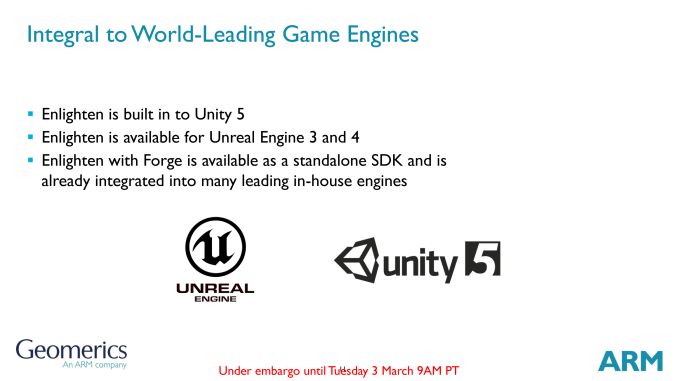 From a feature standpoint Enlighten 3 introduces several new features, including a greatly improved indirect lighting system. Also on the docket is a richer materials system, allowing for improved support for transparent surfaces, which in turn allows for the lighting to be updated to reflect when the transparency of a surface has changed. Alternatively, for scenarios without real-time lighting, the middleware also has increased the quality of lightmaps it can bake.
From a feature standpoint Enlighten 3 introduces several new features, including a greatly improved indirect lighting system. Also on the docket is a richer materials system, allowing for improved support for transparent surfaces, which in turn allows for the lighting to be updated to reflect when the transparency of a surface has changed. Alternatively, for scenarios without real-time lighting, the middleware also has increased the quality of lightmaps it can bake.Ultimately ARM tells us that they believe 2015 will be a big year for Geomerics in the mobile space, saying they expect a number of mobile titles to use the technology. To that end, as part of their GDC launch, ARM and Geomerics are showcasing several Enlighten 3 demos, including an in-house demo they are calling Subway, and a demo showcasing Enlighten 3 running inside Unreal Engine 4.
-
Google Introduces New Street View App
(AnandTech)
Today Google introduced a new Street View application for iOS and Android. Due to the differences between Google's app offerings on iOS and Android it's a bit confusing to describe what this app is replacing. On Android it simply serves as an update to the existing Street View for Maps application that was part of Google Maps. On iOS it actually replaces the Google Photo Sphere application, which was the only way for iOS users to take photo sphere pictures as they didn't have access to the Google Camera application that exists on Android.
The new application really just serves as a portal for users to look around the world at different street view photos. I haven't yet received the Android update as it's still rolling out, but my Photo Sphere app on iOS has updated and based on Google's blog post the interfaces for both are essentially the same. On both Android and iOS the app now integrates a camera for taking Photo Sphere pictures, and it encourages users to take them and add them to Google maps for other users to see. There's also support for hooking up an actual spherical camera to take more professional level images than your phone would.
-
Seagate Demos New SSD Features And Prototypes At FMS
(AnandTech)
In spite of a fire that closed the exhibition floor last week at Flash Memory Summit, Seagate managed to set up several live demos and display their latest SSDs along with a few prototypes, all in a meeting room safely away from the ruined exhibits.
We've previously covered the new products Seagate announced at the beginning of the show last week. Pictures of the Nytro 5000 M.2 SSD, the 15TB Nytro 3000 series SAS SSD, and the 64TB demo based on eight M.2 SSDs are all in the gallery below.
Live Demos
The two live demos used what appeared to be Nytro XP7102 SSDs in the half-height half-length add-in card form factor, but with Micron 3D NAND instead of the planar MLC that the XP7102 launched with. These drives use the same Marvell 88SS1093 controller that is in the Nytro 5000 and in several consumer SSDs. The live demos showed that Seagate has implemented support for the Streams feature from the NVMe 1.3 specification, and IO determinism which has been approved for the next revision of the NVMe specification.
The Streams demo illustrated how tagging write operations according to which task they belong to allows the SSD to keep related writes together and put unrelated data in separate erase blocks. When used properly, data from the same stream can be expected to have a similar lifetime, so when part of it gets invalidated or overwritten, everything in that erase block will also soon be available for garbage collection. With the longer-lived data stored elsewhere, the SSD has far less data to move and compact during its garbage collection process, which leads to lower write amplification and improved performance. For the test scenario Seagate concocted, they were able to show write amplification being reduced from around 8.6-9 down to about 1.03, while throughput for the worker thread that was shown on screen improved from around 9.7k IOPS to 83k IOPS.
The new NVMe IO Determinism feature serves a similar purpose, but implements it in a very different way. NVMe Streams directives are essentially hints to the SSD controller about how to physically organize data. The IO Determinism feature asks the SSD to make hard guarantees by dividing its flash chips and channels into separate NVM Sets. IO to one set will never block access to another set because the data resides on different physical chips. Saturating the PCIe link or overloading the controller's available CPU power would be the only ways for one task to degrade another's IO performance. The downside to this static partitioning method is that a single task accessing one NVM Set will not be able to use the full performance or capacity of the drive, even if there are no other tasks accessing the drive.
The IO Determinism feature also provides for timeslicing access to the SSD, where the drive can provide a window for deterministic IO where background garbage collection is suspended, followed by a non-deterministic period where normal access is permitted by performance may be degraded as the garbage collector catches up. This is essentially a standardization of the "Host Managed SSD" feature OCZ implemented for its Saber 1000 enterprise SATA SSDs in 2015.
Prototypes
Seagate also showed off two unannounced prototypes that they had not planned to feature at their booth. The first was dubbed the Nytro 5000B, a variant of the Nytro 5000 M.2 SSD that is intended as a high-performance boot drive. This was commissioned by a large customer that did not wish to be named. The drive included 256GB of 3D MLC NAND and 2GB of DRAM, plus a connection to an external pack of capacitors. With such a large bank of capacitors, the 5000B can be far more aggressive about caching both metadata and user data in DRAM, allowing for burst write performance far in excess of what the flash could sustain, and without compromising data safety.
The other prototype had similar aims, but instead of a capacitor-backed bank of DRAM it featured 128MB of Everspin STT-MRAM in addition to a normal DRAM cache for metadata. Seagate envisions using the MRAM either as a write cache for user data, or exposing it directly as a separate storage namespace for explicit tiered storage. This MRAM prototype drive was not a preview of an upcoming product. Instead, Seagate views this as a test platform to explore the possibilities and performance characteristics of MRAM, now that it is available in useful capacities.
Gallery: Seagate Demos at FMS 2017
-
Western Digital Launches HGST Ultrastar SS300 SSDs: 3D NAND for Data Centers
(AnandTech)
Western Digital has officially introduced its first data center-class SSDs using 3D NAND flash. The new HGST Ultrastar SS300 SSDs are designed for SAS applications with mixed workloads that demand drives with endurance but are not the highest performance possible. The new drives were co-developed with Intel, so they do not have various proprietary SanDisk technologies, such as the Guardian (as some previous-gen Ultrastar SS), but support numerous new features instead.
The Ultrastar SS300 drives use Intel’s 3D NAND memory - which we suspect is their recent 64-layer TLC & MLC - as well as a proprietary controller that was presumably co-designed with Intel. HGST does not disclose many details regarding the chip, but it might be the same controller that powers the recently launched Intel SSD DC P4500 and P4600 drives, albeit featuring a different configuration and a different firmware. From the feature set, the Ultrastar SS300 controller supports extended error correction code (ECC with a 1x10^-17 bit error rate) to enable higher performance and data integrity, exclusive-OR (XOR) parity (in case a whole NAND die fails) as well as parity-checked internal data paths. In addition, the Ultrastar SS300 complies with the T10 Data Integrity Field (DIF) standard, which requires all interconnect buses to have parity protection (on the system level), as well as a special power loss data management feature that does not use supercapacitors. Western Digital will offer various Ultrastar SS300 models with features like TCG encryption, TCG+FIPS, and instant secure erase to comply with different security requirements.
The HGST Ultrastar SS300 SSDs are aimed at various market segments, including financial transactions, e-commerce, virtualization, database analytics, etc. that generate read-intensive and mixed-use workloads and thus need both performance and reliability. The new SSDs come in a 2.5”/15 mm form-factor with SAS 12 Gb/s interface and are drop-in compatible with existing servers. Meanwhile, when compared to direct predecessors, the Ultrastar SS200, the new SS300 offer similar capacities — from 400 GB to 7.68 TB, but the new drives excel the ancestors in most possible metrics (endurance, performance, power, etc.).
When it comes to performance, the HGST Ultrastar SS300 features sequential read speeds of up to 2100 MB/s (+20% vs. the SS200) as well as sequential write speeds of up to 2050 MB/s (3D MLC, +105%) or 1250 MB/s (3D TLC, +25%). Random read performance of the Ultrastar SS300 is up to 400K (+60%), while random write performance is rated at 170-200K for 3D MLC-based performance/endurance-optimized models as well as 115K-130K for capacity-optimized 3D TLC-powered drives. Interestingly, in addition to 9 W and 11 W power envelopes supported by the predecessor, the SS300 also supports a 14 W mode that unlocks “additional performance capabilities” (i.e., IOPS) as well as an ultra-low power setting.
HGST Ultrastar SS300 Series Specifications 3D MLC NAND-Based 3D TLC NAND-Based Capacities 400 GB
800 GB
1,600 GB
3,200 GB480 GB
960 GB
1,920 GB
3,840 GB
7,680 GB
1,920 GB
3,840 GB
7,680 GBForm Factor 2.5"/15mm Interface SAS 6/12 Gb/s, dual port for 12 Gb/s Controller Proprietary NAND 3D MLC NAND 64-layer 512 Gb
3D TLC NANDSequential Read 2100 MB/s Sequential Write 2050 MB/s 1250 MB/s 1200 MB/s Random Read (4 KB) IOPS 400,000 Random Write (4 KB) IOPS 200,000 170,000 120,000 80,000 Mixed Random R/W (70:30 R:W, 4KB)
Max IOPS285,000 265,000 130,000 115,000 Write Latency 512 B 85 ms unknown Power Idle 3.7 W (<3.2 TB) - 4.7 W (>3.2 TB) Operating 9 W, 11 W, 14 W (configurable) Endurance DPWD 10 3 ~1 ~0.5 Max. PB 400GB: 7PB
800GB: 15PB
1.6TB: 29PB
3.2TB: 59PB400GB: 2PB
800GB: 4.5PB
1.6TB: 8.5PB
3.2TB: 17.5PB480GB: 0.9PB
960GB: 1.75PB
1.92TB: 3.5PB
3.84TB: 7PB
7.68TB: 14PB1.92TB: 1.8PB
3.84TB: 3.5PB
7.68TB: 7PBEncryption AES-256 (?) Power Loss Protection Yes MTBF 2.5 million hours Warranty Five years or max PB written (whichever occurs first) Models HUSMM3232ASS20x
HUSMM3216ASS20x
HUSMM3280ASS20x
HUSMM3240ASS20xHUSMR3232ASS20x
HUSMR3216ASS20x
HUSMR3280ASS20x
HUSMR3240ASS20xHUSTR7676ASS20x
HUSTR7638ASS20x
HUSTR7619ASS20x
HUSTR7696ASS20x
HUSTR7648ASS20xHUSTV1576ASS20x
HUSTV1538ASS20x
HUSTV1519ASS20xLegend for Model Numbers H = HGST
U = Ultrastar
S = Standard
MM = NAND type/endurance
(MM=MLC/mainstream endurance, MR=MLC/read-intensive,
TR=TLC/read intensive TV=TLC very read intensive)
32 = Full capacity (3.2TB)
32 = Capacity of this model
(76=7.6TB, 38=3.84TB 32=3.2TB, 19=1.92TB, 16=1.2TB,
96=960GB, 80=800GB, 48=480GB, 40=400GB)
A = Generation code
S = Small form factor (2.5" SFF)
S2 = Interface, SAS 12Gb/s
x in Model Number denotes Encryption level:
0 = Instant Secure Erase
1 = TCG Encryption
4 = No Encryption, Secure Erase
5 = TCG + FIPSAs for endurance, various versions of the HGST Ultrastar SS300 support 0.5, 1, 3 or 10 writes per day, thus extending addressable markets of the Ultrastar SS-series to applications that require extra endurance at 10 DPWD. All the Ultrastar SS300 SSDs are rated for 2.5 million hours MTBF and are covered with a five-year limited warranty (or the max PB written, whichever occurs first).
Western Digital has already started to ship its SS300 SSDs to select OEM partners, including Oracle. The company does not announce pricing of the drives since they depend on configurations, volume purchasing and other factors.
Gallery: HGST Ultrastar SS300 Data SheetRelated Reading:
- Toshiba Demonstrates NVMe SSD With 64-Layer BiCS3 3D NAND
- Intel Announces New DC P4500 And P4600 Datacenter SSDs
- NGD Launches Catalina: a 24 TB PCIe 3.0 x4 SSD with 3D TLC NAND
- Micron 2017 Roadmap Detailed: 64-layer 3D NAND, GDDR6 Getting Closer, & CEO Retiring
- Mushkin Announces Helix SSDs: 2.5 GB/s, 3D MLC NAND, SM2260, 2 TB Capacity
-
Google Chrome prolonge avec Windows 7 pour 18 mois de plus... au minimum
(Génération NT: logiciels)
Au moins jusqu'en juillet 2021 (et voire davantage), Google Chrome pour Windows 7 bénéficiera d'un support complet.
-
IFA 2016: Acer Press Event
(AnandTech)
We're at Acer's Press Event at IFA!
-
Apple craint les conséquences des taxations américaines sur les importations chinoises
(MacBidouille)
Apple craint de plus en plus les conséquences des taxations américaines à venir sur les produits importés de Chine. Dans une lettre, elle explique que ces taxes vont avoir une forte incidence sur les prix de vente de ses produits : Mac, iPhone, iPad, AirPods... Il en sera de même sur des composants SAV comme les batteries ou encore les accessoires comme les claviers et les souris.
Cela aura un impact sur ses ventes, ses bénéfices et ses capacités d'investissement.La société joue clairement sa dernière carte pour tenter de faire plier la présidence américaine, utiliser son capital sympathie pour faire pencher l'opinion de son côté.
Il faut dire qu'étant donné le prix très élevé de ses appareils, une augmentation de prix pouvant atteindre 25% serait catastrophique. -
HGST And Mellanox Show Off SAN Fabric Backed By Phase Change Memory
(AnandTech)
It seems that NAND flash memory just isn't fast enough to show off the full performance of the latest datacenter networking equipment from Mellanox. They teamed up with HGST at Flash Memory Summit to demonstrate a Storage Area Network (SAN) setup that used Phase Change Memory to attain speeds that are well out of reach of any flash-based storage system.
Last year at FMS, HGST showed a PCIe card with 2GB of Micron's Phase Change Memory (PCM). That drive used a custom protocol to achieve lower latency than possible with NVMe: it could complete a 512-byte read in about 1-1.5µs, and delivered about 3M IOPS for queued reads. HGST hasn't said how the PCM device in this year's demo differs, if at all. Instead, they're exploring what kind of performance is possible when accessing the storage remotely. Their demo has latency of less than 2µs for 512-byte reads and throughput of 3.5GB/s using Remote Direct Memory Access (RDMA) over Mellanox InfiniBand equipment. By comparison, NAND flash reads take tens of microseconds without counting any protocol overhead.
This presentation from February 2014 provides a great summary of where HGST is going with this work. It's been hard to tell which non-volatile memory technology is going to replace NAND flash. Just a few weeks ago Intel and Micron announced their 3D XPoint memory, immediately taking the place as one of the most viable alternatives to NAND flash without even officially saying what kind of memory cell it uses. Rather than place a bet on which new memory technology would pan out, HGST is trying to ensure that they're ready to exploit the winner's advantages over NAND flash.
None of the major contenders are suitable for directly replacing DRAM, either due to to limited endurance (even if it is much higher than flash), poor write performance, or vastly insufficient capacity. At the same time, ST-MRAM, CBRAM, PCM, and others are all much faster than NAND flash and none of the current interfaces other than a DRAM interface can keep pace. HGST chose to develop a custom protocol over standard PCIe as more practical than trying to make a PCM SSD that works as a DIMM connected to existing memory controllers.
Last year's demo showed that they were ready to deliver better-than-flash performance as soon as the new memory technology becomes economical. This year's demo shows that they can retain most of that performance while putting their custom technology behind an industry-standard RDMA interface to create an immediately deployable solution, and in principle it can all work just as well for 3D XPoint memory as for Phase Change Memory.
-
Google Chrome pourrait bloquer les publicités gourmandes en ressources
(Génération NT: logiciels)
Après son bloqueur natif des publicités perturbatrices, Google Chrome pourrait implémenter le blocage de publicités trop gourmandes en ressources.
-
ADATA Launches ISSS314 and IM2P3388 Industrial SSDs: 3D NAND, Extreme Temps
(AnandTech)
ADATA has introduced two new families of 3D NAND-based SSDs aimed at industrial applications. Dubbed the ISSS314 and the IM2P3388, these drives are designed to handle extreme temperatures as well as humidity levels, allowing them to work reliably in very tough environmental conditions. The more powerful IM2P3388 drives use a PCIe interface and offer high performance levels along with a powerful ECC engine and encryption, whereas the less speedy ISSS314 uses a SATA interface and offers very low power consumption that barely tops 2.5 W.
The IM2P3388: M.2, High Performance, Extreme Temps, Encryption, TCG Opal
The ADATA IM2P3388 is an M.2 drive that uses a NVMe PCIe 3.0 x4 interface and is based on 3D MLC NAND. This specific drive is designed to withstand ESD and EMI, up to 20 G vibration and 1500G/0.5ms shock, extreme temperatures from –40°C to +90°C, as well as high humidity (5%-95% RH, non-condensing). To put it into perspective: the IM2P3388 drives can operate in Antarctica or in the Lut Desert in Iran. In the real world, ADATA’s new SSDs will serve inside space-constrained industrial or commercial PCs, servers, military-grade systems, and embedded computers.
The IM2P3388 drives are based on a Silicon Motion controller that ADATA does not name, we suspect is the SM2260 with some additional customization. As for the NAND, the IM2P3388 SSDs use carefully selected 3D MLC that can handle high temperatures for prolonged amounts of time. The IM2P3388 takes advantage of all the capabilities of the controller and therefore supports AES-256 encryption, TCG Opal 2.0 spec, end-to-end data protection, and so on. In addition, the drive has multiple sensors that monitor its condition.
ADATA IM2P3388 SSD Specifications Capacity 128 GB 256 GB 512 GB 1 TB Model Number Commercial IM2P3388-128GB IM2P3388-256GB IM2P3388-512GB IM2P3388-001TB Industrial IM2P3388-128GC IM2P3388-256GC IM2P3388-512GC IM2P3388-001TC Controller Silicon Motion SM2260 (?) NAND Flash 3D MLC NAND Form-Factor, Interface M.2-2280, PCIe 3.0 x4, NVMe 1.2 Operating Temperature Commercial -10°C to 80°C Industrial -40°C to C to 90°C Vibration Resistance 20G (10 - 2000 Hz) Shock Resistance 1500G/0.5 ms half sine wave Operating Humidity 5% - 95% RH non-condensing Sequential Read ~1000 MB/s (?) ~2000 MB/s (?) 2500 MB/s Sequential Write ~300 MB/s (?) ~600 MB/s (?) 1100 MB/s Random Read IOPS unknown Random Write IOPS unknown Pseudo-SLC Caching Supported DRAM Buffer Yes, capacity unknown TCG Opal Encryption Yes Power Consumption Up to 4.8W Power Management DevSleep, Slumber Warranty unknown MTBF >2,000,000 hours As for performance, ADATA specifies the drive to offer up to 2.5 GB/s sequential read speeds and up to 1.1 GB/s sequential write speeds (when pSLC caching is used), but does not specify random performance. ADATA’s IM2P3388 will be available in 128 GB, 256 GB, 512 GB, and 1 TB configurations. Keeping in mind the high density of modern flash chips, expect the entry-level models to be slower than their higher-capacity counterparts. In general, expect performance of the IM2P3388 to be comparable to the XPG SX8000 drives featuring the SM2260 and 3D MLC.
The ISSS314: 2.5”, Extreme Temps, Low Power, Starting at 32 GB
The ADATA ISSS314 SSDs come in a traditional 2.5”/7 mm drive form-factor and use a SATA 6 Gbps interface. In order to satisfy the diverse needs of customers, ADATA will offer the ISSS314 in 32 GB, 64 GB, 128 GB, 256 GB, and 512 GB configurations. The higher-end models will provide up to 560 MB/s sequential read and up to 520 MB/s sequential write speeds, whereas the entry-level drives will be considerably slower. As for power consumption, the new SSDs are rated to only use up to 2.5 W, which puts them into the energy efficient category.
The ISSS314 SSDs are based on an unknown controller as well as 3D MLC and 3D TLC NAND memory sorted using ADATA’s proprietary A+ testing methodology to find the higher quality chips. The industrial ISSS314 drives based on 3D MLC memory are rated to withstand shock, EMI, and extreme temperatures from –40°C to +85°C, and thus are aimed at industrial applications. By contrast, commercial 3D MLC ISSS314 SSDs are rated for –10°C to +80°C operation. Meanwhile, the 3D TLC-powered ISSS314 is guaranteed to work in a temperature range from 0°C to +70°C, but can also withstand shocks, ESD, EMI, and so on. As for features, all the ISS314 SSDs have S.M.A.R.T, a temperature sensor, hardware power detection, and flash protection.
ADATA ISSS314 Specifications Capacity 32 GB 64 GB 128 GB 256 GB 512 GB Model Number MLC Commercial ISSS314-032GB ISSS314-064GB ISSS314-128GB ISSS314-256GB ISSS314-512GB Industrial ISSS314-032GC ISSS314-064GC ISSS314-128GC ISSS314-256GC ISSS314-512GC TLC Commercial - ISSS314-128GD ISSS314-256GD ISSS314-512GD Controller Silicon Motion SM2258 (?) Form-Factor/Interface 2.5"/7 mm/SATA NAND MLC Commercial 3D MLC Industrial 3D MLC TLC Commercial - 3D TLC Operating Temp. MLC Commercial -10°C to 80°C Industrial -40°C to C to 85°C TLC Commercial 0°C to 70°C Vibration Resistance 20G (10 - 2000 Hz) Shock Resistance 1500G/0.5 ms half sine wave Operating Humidity 5% - 95% RH non-condensing Sequential Read unknown 560 MB/s Sequential Write unknown 520 MB/s Random Read IOPS Up to 90K IOPS (taken from SM2258, actual will be lower) Random Write IOPS Up to 80K IOPS (taken from SM2258, actual will be lower) Pseudo-SLC Caching Supported DRAM Buffer Yes, capacity unknown TCG Opal Encryption No Power Consumption Up to 2.5W Power Management DevSleep Warranty unknown MTBF 2,000,000 hours ADATA does not publish recommended prices for its industrial and commercial SSDs. Since such products rarely show up in mainstream retail, their actual prices for customers typically fluctuate depending on the order size and other factors.
Related Reading:
- Transcend Introduces Extreme Temperature DDR4 SO-DIMMs
- Logic Supply ML100G-50 Fanless Skylake vPro Industrial NUC Review
- ADATA Launches XPG SX8000: High-End M.2 NVMe SSD Featuring 3D MLC NAND
- ADATA Announces XPG Gammix S10: 3D TLC, SM2260, 1.7 GB/s Seq. Read, Radiator
- ADATA Announces The XPG SX7000 Series SSDs: Up to 1 TB, M.2, PCIe 3.0 x4
- Previewing Silicon Motion SM2260 NVMe Controller With 3D MLC NAND (512GB)
- ADATA Announces Ultimate SU900: 3D MLC NAND, SMI Controller, SATA
- ADATA Introduces Ultimate SU800 SSD: SMI Controller, 3D NAND, SATA Interface
-
HGST Ultrastar SS200 SSD: Up to 7.68 TB, 1.8 GB/s, Dual-Port SAS 12 Gbps
(AnandTech)
Western Digital has introduced a new family of Ultrastar SS200 SAS SSDs that wed high-performance with capacities up to 7.68 TB as well as relatively high endurance. The drives are aimed at mixed-use and read-intensive workloads that require not only maximum throughput, but also reliability. To guarantee the latter, the Ultrastar SS200 uses the company's Guardian technology.
The HGST Ultrastar SS200-series SSDs are designed for datacenters that rely on SAS backplanes, which are used for modern read-intensive and mixed-use workloads that benefit from performance and reliability (e.g., financial transactions, e-commerce, virtualization, database analytics, etc.). The drives come in 2.5”/15 mm form-factor with two SAS 12 Gbps ports and are based on the Guardian platform originally developed by SanDisk. The Guardian technology handles flash management, signal processing, end-to-end data path protection, power-loss protection and so on. Unlike the previous-gen products featuring the Guardian, the Ultrastar SS200 SSDs are based on a proprietary Western Digital controller and firmware, not a third-party chip with a custom firmware, the company told us. The manufacturer claims that the SS200 drives use “commercial-grade” MLC NAND memory, which probably means 128 Gbit ICs made using 15 nm fabrication process.
HGST Ultrastar SS200 Series Specifications Ultrastar SS200 Capacities 400 GB
800 GB
1,600 GB
3,200 GB480 GB
960 GB
1,920 GB
3,840 GB
7,680 GBForm Factors 2.5"/15mm Interface dual-port SAS 12 Gbps Controller Proprietary NAND 128 Gb MLC made using 15 nm process tech (?) Sequential Read 1800 MB/s Sequential Write 1000 MB/s Random Read (4 KB) IOPS 250,000 Random Write (4 KB) IOPS 86,000 37,000 Mixed Random Read/Write
(max IOPS 70%R/30%W, 4KB)154,000 90,000 Write Latency 512 B 100 ms Power Idle 3.8 W - 4.3 W Operating 9 W - 11 W (configurable) Endurance 3 DWPD 1 DWPD Encryption AES-256 Power Loss Protection Yes MTBF 2.5 million hours Warranty Five years Since different workloads mean different demands for capacities and endurance, Western Digital plans to offer capacity-optimized versions of the SS200 that can store 480 GB – 7.68 TB of data and rated for one drive write per day (DWPD) for five years as well as endurance- and performance-optimized models rated at 3 DWPD for five years that can store 400 GB – 3.2 TB of data. Power consumption of the Ultrastar SS200 SSDs is configurable and can be as low as 9 W or as high as 11 W.
When it comes to performance, the HGST Ultrastar SS200 supports sequential read speeds of up to 1800 MB/s as well as sequential write speeds of up to 1000 MB/s. Random read performance of the Ultrastar SS200 is up to 250K, whereas random write performance is rated at 86K/37K (performance-/capacity-optimized models).
Samples of the HGST Ultrastar SS200 SAS lineup of SSDs are available to select customers now and Western Digital intends to begin their volume shipments in the first quarter of 2017. The drives will be covered with a five-year warranty and will be rated at 2.5 million-hour MTBF.
Related Reading:
-
GENESIS: NSA Exploit of the Day
(Schneier on Security)
Today's item from the NSA's Tailored Access Operations (TAO) group implant catalog:
GENESIS
(S//SI//REL) Commercial GSM handset that has been modified to include a Software Defined Radio (SDR) and additional system memory. The internal SDR allows a witting user to covertly perform network surveys, record RF spectrum, or perform handset location in hostile environments.
(S//SI//REL) The GENESIS systems are designed to support covert operations in hostile environments. A witting user would be able to survey the local environment with the spectrum analyzer tool, select spectrum of interest to record, and download the spectrum information via the integrated Ethernet to a laptop controller. The GENESIS system could also be used, in conjunction with an active interrogator, as the finishing tool when performing Find/Fix/Finish operations in unconventional environments.
(S//SI//REL) Features:
- Concealed SDR with Handset Menu Interface
- Spectrum Analyzer Capability
- Find/Fix/Finish Capability
- Integrated Ethernet
- External Antenna Port
- Internal 16 GB of storage
- Multiple Integrated Antennas
(S//SI//REL) Future Enhancements:
- 3G Handset Host Platform
- Additional Host Platforms
- Increased Memory Capacity
- Additional Find/Fix/Finish Capabilities
- Active Interrogation Capabilities
Status: Current GENESIS platform available. Future platforms available when developments are completed.
Unit Cost: $15K
Page, with graphics, is here. General information about TAO and the catalog is here.
In the comments, feel free to discuss how the exploit works, how we might detect it, how it has probably been improved since the catalog entry in 2008, and so on.
-
Pornographie sur le compte Twitter d'un mort et des milliers hackés
(Génération NT: logiciels)
Plus de 2 500 comptes Twitter ont été compromis afin de diffuser des liens pointant vers des contenus à caractère pornographique.
L'actualité de cette partie est agrégé automatiquement à partir d'autres sites.
Contenus ©2006-2024 Benjamin Poulain
Design ©2006-2024 Maxime Vantorre

